PDF LINK: 20th century research into Behavioural Control, and its implications for our minds
Introduction
The Mind Control Agenda
The idea that humans can have control over other humans’ minds is not something new, anthropologically our institutions of religion, education and social norms exert a kind of control over individuals. However, during the 21st century the human mind became a focus for objective scientific research, with the specific aim of influencing or gaining control over the mental faculties of others, as a kind of state objective. In the context of the rise of the threat of socialist revolution controlling what people think, through public relations and propaganda became important state objectives for elites. Propaganda and public relations are obvious tools for the state and private corporations to sway public opinion, however other ways of controlling human behaviour were also extensively researched and tested. The rise of psychiatry for example constitutes the medicalization of individuals who differ from a pre-established ‘happy medium’, rather than understanding that such persons ‘pathologies’ may be caused by the very environments in which they live. The television as a medium was also an important invention allowing for the mass communication of propaganda related messages, as well as functioning as a therapeutic pacifier for entire populations. . Another important development is the behaviourist line of conditioning human behaviour through the repetition of stimuli and response; in order to hardwire certain responses into the individual. This premeditated conditioning was of interest to Intelligence Agencies in World War II and in the Cold War, especially when used in combination with hypnosis and psychotropic drugs. This fascinating history calls on us to question whom it is that would want to control us. In today’s world, this is all glaringly obvious. It is the same elites that employ public relations companies and propaganda, the owners of the means of production. The elite, fearful of social unrest and revolution have invested into the research of the subconscious manipulation of individuals and the masses towards the end of maintaining their power differential in society. The historic (and classified until the 1990s) history of deep Nazi involvement in such endeavours particularly in the United States underlines the fascist ideological sympathies behind such programming. The horror of programming dissociative states into individuals, the complicity of medical institutions and secret government departments in its research, implementation and cover up is an uncomfortable history. At minimum it clearly illustrates the extent to which the manipulation of the human mind was investigated by elite elements within society. Of course, ‘mind control’ was also appealing to Soviets seeking to engineer their populations; however, the information on this is more difficult to access. It is a testament to democratic ideals that a few of the related documents on this subject were actually made public in the US (eventually). It would be simplistic to read this article without this corollary, a parallel research project in the Soviet context, as well as elsewhere would enrich the discussion on this subject. Bearing in mind the lessons of game theory, we can see the Cold War of a tit-for-tat race to be stronger than the other side. Of course both sides invested heavily in this area, dismissing moral and ethical questions given the overarching importance of supremacy over the other side. This article looks through historical documents to see the lengths to which the engineering of controllable human beings was taken. We are conditioned to work 9 to 5 jobs, to be good consumers, we are increasingly distracted by our technology and electronic communication saturated existences. That there may be a programme run at the behest of our elites, of insidious control, through media, pharmaceuticals , technology and our educational system designed to make the citizenry complicit with, and unquestioning of the neoliberal state is a distinct possibility, becoming more and more recognised . Why is it that we do not question the necessity for working in jobs we do not like? We take our pills, spend our days staring at LCD screens of one type or another, watch our TVs and consume the cultural products of our particular niche. The aggregate mind control programme’s greatest victory is that the very structure of our society is perceived as the only possible reality imaginable.
Chapter One
The Roots of the 20th Century interest in the Unconscious
“The conscious and intelligent manipulation of the organized habits and opinions of the masses is an important element in democratic society.”[1]
At the beginning of the 20th century psychoanalysis and philosophical reflections on what the self is and what the mind is began to be questioned. Freud began examining the base hidden forces underlying consciousness and took a scientific approach to looking for a general theory of consciousness. A path was opened for the study of people’s personalities, behaviour and feelings, from an objective, scientific viewpoint. Around the same time anthropology was being founded as discipline in its own right, and the insight from anthropologists studying far away cultures presented the ways that ‘other’ sorts of people think, feel, organise and behave. These insights promoted objective reflections on how and why societies are organised the way they are, and why people do what they do. Behaviour also arose as a topic of interest, initial studies of animals led to studies on human behaviour. Pavlov’s dogs were taught to salivate at the sound of a bell early in Russia early on in the century. In America the scientist John Watson conditioned a baby ‘Little Albert’ to be scared of a rabbit, by making a loud noise every time he presented it. B F Skinner followed Watson’s lead, he invented the term ‘Operant Conditioning’ “based on the idea that reinforcement (repetition of either a positive or a negative response to action) was at the root of all learned behaviour.”[1] Skinner categorised three different types of conditioning: Operant Conditioning, Aversion Therapy and Desensitisation. If a specific behaviour receives a reward, the subject is conditioned towards that response; alternatively an electric shock can be associated with behaviour (negative conditioning).
At the beginning of the century propaganda emerged as a discipline for mass control, facilitated by the growing print media and radio. For example propaganda was used extensively in World War I to generate support for the war against ‘The Hun’, for which millions of young men gave their lives, and gave propaganda a bad name ever since. Propaganda became more and more important for business and politicians, and Edward Bernays, the ‘founding father of public relations’ re-appropriated the expression, writing candidly in 1928 that:
“The conscious and intelligent manipulation of the organized habits and opinions of the masses is an important element in democratic society. Those who manipulate this unseen mechanism of society constitute an invisible government which is the true ruling power of our country.”[2]
With the growth of this industrial production the environments within which human beings lived changed radically. In 1895 the automobile was introduced, the automatic screw machine was introduced and X-Rays were discovered. . In 1899 the aeroplane was invented. Exponential technological advancements changed the world very rapidly, in a very short period. The advances of technology were applied on the battlefields, resulting in 15 million deaths in World War I, and 60 million deaths in World War II. The phrase ‘Lions led by Donkeys’, was used at the end of World War I to describe brave soldiers being sent to their deaths by indifferent leaders. Science advanced exponentially along with killing, and callousness from the war-elites, coldly sending young men to their deaths by the tens of thousand. Controlling citizens became especially important following World War II, with the returning soldiers coming home to unemployment and limited opportunities. The wasted deaths of the two great wars also prompted reflection on the nature of the human mind and the emotions that allowed such tragedy from a psychoanalytical perspective. Organised labour, unemployment and unhappy populations were recognised as threats to stability. Understanding the ways that citizens think, keeping them happy and in line with the ideological framework of the state was a key priority at the time, to guarantee stability and the survival of the given elites. Governments and elites recognised that a key to governance was keeping people happy, and that this was more cost effective than maintaining a violently repressive dictatorship, as Aldous Huxley said “in the future people will learn to love their servitude”.
Chapter Two
Mapping the human mind and human behaviour –
Cybernetics and The Macy Conferences
“…at that conference…the one where Milton Erickson hypnotised that Yale psychologist, it was at the end of that conference that you really had the design of what needed to be done.[1]
The Macy Conferences were a series of conferences organised by The Joshua Macy Foundation in the 1940s. The foundation was named after a New England Quaker named Josiah Macy, Jr., whose family made a vast fortune in oil and shipping working closely with the Rockefellers. Macy’s daughter established the Macy Foundation in 1930. Who also had a hand in the founding of The Macy Foundation was Military Intelligence pioneer, General Marlborough Churchill, (related to Winston Churchill), who became head of American Military Intelligence in 1918, and was a founder of The Black Chamber, the organisation which was to become The National Security Agency. Marlborough was head of the board of Directors of The Macy Foundation. The Macy Foundation was from the outset ‘spooky’ to say the least. The Conferences brought together leading scientists in plush surroundings, a true think tank of the brightest minds formed to foster cross-pollination of ideas, who became known as ‘the cybernetics group.’
“Our meetings are in contrast to the usual scientific gatherings. They are not designed to present neat solutions to tidy problems but to elicit provocative discussion of the difficulties which are being encountered in research and practice. For this reason, we ask that the presentations be relatively brief and that emphasis be placed on discussion as the heart of the meeting.”[3]
The Macy Group[4] The first Macy Conference happened in 1942 and it was broadly based on the subject of hypnotism. Conference was on the subject of hypnotism. Following the Conference WWII broke out, and the conferences were put on hold. In an interview in 1976, conference founders Margaret Mead and Gregory Bateson remember the first conference:
Gregory Bateson: There was this Macy meeting in what, ’42? Stewart Brand: Who started it, and what was it about? Bateson: This was a meeting called ‘Cerebral Inhibition,’ which in fact was a meeting on hypnosis.* ‘Cerebral inhibition’ was a respectable word for hypnosis. Most of what was said about ‘feedback’ was said over lunch. Margaret Mead: Well, I know that’s what you always tell people, but I didn’t sit at the same place at lunch, and I heard what was said at that conference. But at that conference, which is the one where Milton Erickson hypnotised that Yale psychologist, it was at the end of that conference that you really had the design of what needed to be done. And then you were caught up in war work and went overseas and there was that long period.[5]
From the outset of the Macy Conferences it was clear that the focus was on systemically understanding the inner workings of the human mind. Following the end of World War Two, the conferences re-convened and ten conferences were held before the end of 1953. The Conferences are attributed to the development of a new concept and discipline of study, Cybernetics. Essentially a study of systems and governance its etymology stemming from the Greek word for helmsman, kybernētēs. In the conferences presentations were made on how systems work, such as how a frog’s brain and nervous system works, how missiles are guided, how game theory works, how hypnosis works, how electrical circuits work, tribal societies social relations function, or the psychology of arms races. The Conferences served to allow the top brains from the different fields to get acquainted with each other’s tools, and borrow them. By tools I mean frames of reference, ways of visualising things. The commonality was seeing things as systems, and the territory was human behaviour. Human behaviour began to be studied using a multidisciplinary scientific methodology, borrowing from the insights from neuroscience, anthropology, systems theory, electric circuitry, mathematics, and statistical analysis. The study of human behaviour was unmapped territory and mind altering drugs, questions of consciousness and control of the mind were important areas.
Cybernetics was obliged from the beginning to ally itself with a movement—a political lobby, actually, operating under the auspices of the Macy Foundation— that sought to assure world peace and universal mental health by means of a bizarre cocktail concocted from psychoanalysis, cultural anthropology, advanced physics, and the new thinking associated with the cybernetics group .[6]
Cybernetics at the time was influenced by theories of homeostasis, because it meant that design of systems for understanding and strategies for conducing human behaviour, on an aggregate an individual level, were conditioned by the unmovable frame of either a capitalist consumer economy as virtuous in the west or a centrally planned socialist economy as virtuous in the East. Alterations to the system therefore had to take place at the level of the human; the economic and social order itself could not be questioned, because this epistemological area was too politically and ideologically charged. The baseline itself was established was not questioned. It is a bit like a faulty heating system in a house which is uncontrollably hot sometimes, then maybe switches off altogether. Rather than fixing this faulty thermostat, the people living in the house have to put more or less clothes on, or open or close the windows. Structural adjustments to the heating system are not considered. The Macy Conferences gave the studied humans as mechanistic constructs and machines as living systems. Human behaviour was equated with particles, numbers, or simple servos, because of the ‘hard science’ frames of reference which they were encapsulated in. Seeing humans as servos or predictable automatons allows the drawing of systems with feedback loops and networks of causality simpler. In this way humans became reduced to ‘rational utility maximisers’ in social, political and economic relations, following game theory and liberal economics. The real territory of the human experience was diminished in order to fit into pre-defined, mechanistic maps of possible systems of how humans could interact. At the same time, the Conferences looked at how one thing affects another, as Margaret Mead recalls:
“The thing that cybernetics made the most difference to me, aside from all the things that you know, in the social organisation field, was the interaction between the mother and child. There had been too much emphasis that there were temperamental differences among children, so that you responded differently to a hyperactive baby than you did to a quiet baby. But the extent to which there was a system in which the mother was dependent on what the child had learned as the stimulus for the next position wasn’t well articulated until we got the cybernetics conferences going.”[7]
The close relationship between cybernetics and clandestine intelligence
John Marks, the historical researcher of the clandestine MK-ULTRA programme obtained a lot of material under the Freedom of Information Act in the 1970’s and wrote that the conferences were full of spies:
The Macy Conferences were popular with The Technical Services Division (TSS) of The Office of Strategic Studies, the precursor of The CIA. The Macy Foundation went on to become a front organisation for the CIA funding of psychiatric and pharmacological human experimentation. Held once a year in the genteel surroundings of the Princeton Inn, the Macy Foundation conferences brought together TSSs (and the military’s) leading contractors, as part of a group of roughly 25 with the multidisciplinary background that TSS officials so loved. The participants came from all over the social sciences and included such luminaries as Margaret Mead and Jean Piaget. The topics discussed usually mirrored TSS’s interests at the time, and the conferences served as a spawning ground for ideas that allowed researchers to engage in some healthy cross-fertilization.[8] Every TSS project officer had a skull session with dozens of recognized experts several times a year. “That was the only way a tiny staff like Sid Gottlieb’s could possibly keep on top of the burgeoning behavioural sciences,” “There would be no way you could do it by library research or the PhD dissertation approach.” The TSS men always asked their contacts for the names of others they could talk to, the study and design of self-regulating machines, cybernetics led to the question of control, and in particular, who controls whom.[9]
If we note some of the roles played by Macy Conference participants, the links with the clandestine services become clear. For example, the genius mathematician Von Neumann, he was the man who advised the US administration to bomb Nagasaki and Hiroshima, a long time Manhattan Project scientist, and one of the early proponents of game theory and RAND employee. New York Psychoanalyst Lawrence Kubie researched on drugs and interrogation for military intelligence. Arturo Rosenbleuth, Norbert Weiner and Shannon worked on missile guidance systems, Bateson worked on ‘black propaganda’ and strategies for colonial rule for the OSS during the war, while Mead published studies for the government on morale building, as well as researching Russian Culture for the US Navy. Doctor Harold Abramson twice chair of the Macy Conferences was a pioneer of the testing of LSD on unwitting subjects, research which was to be sponsored by the CIA via the Macy Foundation. Harold Beecher, who presented a paper on subject’s responses to pain in 1950, while ostensibly a respected psychiatrist, was at the time of the Macy Conferences applying the research from scientists at Dachau on prisoners in Oberursel, Germany, the European Command Interrogation Center for The US military. Warren McCulloch was an early pioneer in the use of brain implants. Cornell neurologist Rd. Harold Wolff, who would become the Chairman of the Board of Directors for MK-ULTRA’s front organization, The Human Ecology Fund was also present at the first conference on hypnotism in 1942. In 1959, The Macy Foundation held the first conference on LSD. The same year that Gregory Bateson started administering LSD to veterans and future hippies at Menlo Park, under a CIA MK-ULTRA contract fronted by The Macy Foundation. By 1959, Harold Abrahamson, the Macy Conference Chair had gone on to develop his own MK-ULTRA consultancy. That these conferences began with a Macy sponsored informal meeting on ‘Cerebral Inhibition’ during which Milton Erickson hypnotised someone in public is chilling. The thread that runs through the conferences is how to understand the human mind, and how humans interact with their environment. Hypnosis and LSD were both areas of study because they shed light on how the mind worked and could be governed. There was also the thread of using a mechanical metaphor to understand human behaviour, seeing the human as a black box of stimuli going in and responses coming out. At the same time, the Conferences advanced the idea of understanding humans as part of living systems. Norbert Weiner was a left leaning humanist, and clashed with the views of Macy group founder and game theorist John Von Neumann. As a scientist he refused to participate in American government funded cold war research for moral reasons, and even came under FBI investigation for his liberal views and friendships with Marxists. Weiner worked to construct dialogue with The Soviet Union and was a co-organiser of the famous Waldorf Astoria Cultural and Scientific Conference for World Peace in 1949, and attended conferences in Moscow. Weiner’s theories of cybernetics were very popular with the Russians. Margaret Mead recalls that Norbert Weiner went to Russia to lecture on cybernetics in the 1940’s:
“[Weiner] wrote the book “Cybernetics” and sort of patented the idea to that extent. And then he went to Russia, and was very well received. The Russians were crazy about this right away – it fit right to their lives. But one of the big difficulties in Russian psychology is that they have great difficulty learning that anything’s irreversible. So cybernetics spread all over the Soviet Union very rapidly, and in Czechoslovakia, whereas what spread here was systems theory instead of cybernetics.”[10]
I will close this section on the Macy Conferences with a report from The CIA on Soviet Mind Control submitted as part of an investigation into President Kennedy’s assassination, where the directions of the Mind Control research bear a striking resemblance to the themes of The Macy Conferences. Submitting a memorandum to the Presidents Commission on the Assassination of President Kennedy in 1962, Richard Helms, later to become Director of the CIA (and later to burn as many MK-ULTRA records as possible prior to a Senate Investigation) submitted a memorandum on the subject of: “Soviet Research and Development in the Field of Direction and Control of Human Behaviour”. The report was submitted to judge whether the assassination could have been caused by a mind-controlled Soviet operative. Helms (then Deputy Director for Plans of the CIA) explain that Soviet efforts to achieve Mind Control were characterised by the following factors:
-
a. The adoption of a multidisciplinary approach integrating biological, social and physical-mathematical research in attempts to better understand and eventually control human behaviour in a manner consonant with nation plans
-
b. The outstanding feature, in addition to the interdisciplinary approach is a new concern for mathematical approaches to an understanding of behaviour. Particularly notable are attempts to use modern information theory, automata theory and feedback concepts in interpreting the mechanisms by which the “second signal system”, i.e. speech and associated phenomena, affect human behaviour. Implied by this research was the hope for a technology for controlling behaviour via the “second signal system,” using information inputs as causative agents rather than chemical agents, electrodes or other more exotic techniques applicable, perhaps to individuals rather than groups.
-
c. This new trend, observed in the early Post-Stalin Period continues. By 1960 the word “cybernetic s” was used by the Soviets to designate this new trend. This new science is considered by sum as the key to understanding the human brain and the product of its functioning – psychic activity and personality – to the development of means for controlling it and ways for moulding the character if the “New Communist Man”. As one Soviet author puts it: Cybernetics can be used in “moulding a child’s character, the inculcation of knowledge and techniques, the amassing of experience, the establishment of social behaviour patterns…all functions which can be summarized as ‘control’ of the growth process of the individual.” 1/Students of particular disciplines in the USSR, such as psychologists and social scientists, also support the general cybernetic trend.[11]
What I find so interesting about this letter, is that demonstrates the clear link between the subject of Cybernetics and Mind Control. It seems that an applied form of Cybernetics for some sort of population control was being used in the Soviet Union to affect the behaviour of its citizens. It also highlights that the idea of a multi-disciplinary approach to human behaviour was at the forefront of the Soviet population control research. The discussions and ideas, which came out of the Macy Conferences, are very important for the way of life that we are leading today in general. While the ‘spooky side’ of the conferences was very important, the beginnings of computer programming and the idea of ‘the ecosystem’ can also be traced back to the Conferences.
Chapter Three
The Military Roots of Mind Control: The Cold War, the
CIA and concentration camp science
“He’s On Our Side and that’s all that matters”[1]
The rise of the CIA and the inherent elitism of the CIA
It is important to document the rise of the American Central Intelligence Agency within the context of this subject matter for the following reasons. Firstly in order to underline the role played by elites in the intelligence services, given their privileged position within the state apparatus. Secondly, because the efforts to conduct immoral ‘Mind Control’ experiments on individuals, utilising principles uncovered at the Macy Conferences was conducted in Top Secret. In 1947 the Central Intelligence Agency was created with America’s President Truman gave directive ‘NSC-4’, instructing the Director of the CIA to conduct ‘covert psychological activities’ in robust support of anti-Communist policies. It started as a continuation of the Office of Strategic Studies, which had coordinated American espionage in the Second World War. The CIA was from the outset an elitist institution recruits were culled from the country’s best universities and most prosperous and well-connected families:
“It was the historic elite, the Ivy-Leaguers who cast their influence over America’s boardrooms, academic institutions, major newspapers and media, law firms and government, who now stepped forward to fill the ranks of the fledgling agency”[12]
Culturally, the group became homogenous and introspective. Director of the CIA in the mid-seventies, William Colby wrote of the secret services in general that:
“Socially as well as professionally they cliqued together, formed a sealed fraternity. They ate together at the same special favourite restaurants; they partied almost only among themselves; their families drifted to each other, so their differences did not always have to add up. In this way they increasingly separated themselves from the ordinary world and developed a rather skewed view of that world. Their own dedicated double life became the proper norm, and they looked down on the life of the rest of the citizenry.”[13]
The CIA was active at a time when Soviet GDP growth was in some years higher than that of the United States, so policy-makers felt that the threat of ‘losing’ to Communism was real, and a no-holds barred strategy was required in order to achieve survive. Diplomat and Cold War architect George Kennan remarked in a speech at the National War College in 1947 that:
The Soviets have won a strong position in Europe, so immensely superior to our own through unabashed and skilful uses of lies. They have fought with unreality, with irrationalism. Can we combat this unreality successfully with rationalism, with truth, with honest, well-meant economic assistance?[14]
The rationale was that the CIA would have to use ‘any means necessary’, however immoral to defeat the communist threat. This justification led to a culture of permissiveness, and active encouragement from the highest level of immoral activities. The Director of the CIA at the time was Allen Dulles, a definite member of the Elite, a United Fruit Company Trustee with extensive business ties in Germany. Revered in the spy word for really ‘having craft’. Dulles was an enigmatic figure prominently involved in spy networks in Germany during World War II, and interestingly enough was also a mate of the psychotherapist C. G. Jung. Conveniently, Allen Dulles’ brother John Foster Dulles was Secretary of State from 1953-1959. This connection allowed Dulles’ CIA a lot of freedom from political oversight. The CIA had an unlimited budget, freedom from fiscal accountability, and freedom to maintain details of its organizational structure secret.
Operation Paperclip: reaping the benefits of terminal human experimentation
The end of WWII dovetailed with the beginning of the Cold War with the Soviet Union. As the war ended there was a scramble to secure Nazi technology, America also sought to secure the secrets of Nazi scientists. The attaining of this knowledge trumped any moral considerations. “Operation Paperclip” presided over by Alan Dulles, made deals with top Nazi scientists, technicians, spymasters and torturers, offering residency in the US and official positions in order to gain the upper hand against the Russians. The clandestine services took very on board the philosophy that The Enemy of Mine Enemy is My Friend. Although President Truman was against the hiring of any Nazi’s the Joint Intelligence Operatives Agency, (JIOA) responsible for the project expunged from the public record incoming scientists’ Nazi Party memberships and régime affiliations. Truman’s order expressly excluded anyone found “to have been a member of the Nazi Party, and more than a nominal participant in its activities, or an active supporter of Nazi militarism.” Once “bleached” of their Nazism, the secret services granted the scientists security clearance to work in the United States. Paperclip, the project’s operational name, derived from the paperclips used to attach the scientists’ new political personae to their “US Government Scientist” JIOA personnel files.[15] The scientists offered clean records, and lucrative employment in America included not only rocket scientists, but also specialists in torture and the concentration camp doctors who conducted terminal experiments. These scientists became subsumed into the CIA clandestine networks, and their methods and ideas informed research.
In 1946, President Truman authorized Project Paperclip to exploit German scientists for American research, and to deny these intellectual resources to the Soviet Union. Some reports bluntly pointed out that they were “ardent Nazis.” They were considered so vital to the “Cold War” effort, that they would be brought into the US and Canada. Some of these experts participated in murderous medical experiments on human subjects at concentration camps. A 1999 report to the Senate and the House said “between 1945 and 1955, 765 scientists, engineers, and technicians were brought to the US under Paperclip and similar programs.”[16]
104 Paperclip Rocket Scientists in Texas[17]
Cold War morality: Unit 731 pardoned in exchange for access to research
Japanese biological weapons researchers, who conducted the most gruesome perverse human experiments in Manchuria were all given full pardons and protection in exchange for continuing biological research in America, in spite of the evidence of mass human experimentation. These scientists’ naturalisation came from the highest level, authorised by General MacArthur who oversaw the occupation of Japan in the aftermath of the war. This was of course only admitted in 1993, almost 50 years later. The sort of experiments these Japanese scientists conducted en masse included:
Bombs containing gangrene or various bacterium were set-off in close proximity to prisoners, not with the intention of causing death by explosion, but in order to study the effectiveness of airborne infection. Among many other atrocities, subjects were exposed to extremes of temperature, decompression, bombarded by x-rays, starved, deprived of sleep, boiled alive, killed in giant centrifuges, or even subjected to vivisection whilst still alive.[18]
The scientist and General in charge of Unit 731, Shirō Ishii was responsible for 600 human experiments per day in Manchuria was pardoned and given American citizenship following the Japanese surrender. His brutal experiments which included sewing live fleas inside the stomachs of victims and monitoring the results were forgiven in the thirst for his advanced knowledge of biological weapons which could give America the military edge.
In fairness, the Soviet Union was running what would become known as Biopreparat, a network of secret biological weapons facilities which employed an estimated 30,000 people, working on such things as genetically enhanced super-strain viruses as weapons of war.[19] The Soviet Union’s biological weapons research programme was also bolstered from Japanese scientists from Unit 731 captured in Manchuria.
The 50 year Secret: The CIA and the Gehlen Organisation
The Nazi chief of intelligence against Soviet Russia, Reinhard Gehlen arrived in the US in 1945, was received at the highest level. Gehlen went on to create ‘The Gehlen Organisation’, which ran the so-called rat-lines which to smuggle Nazis out of Germany to South America. Cooperation with The Gehlen Organisation was justified as a vital necessity, given how little intelligence the American forces had at the time on the Soviets. Gehlen’s ‘intellgence’ came mainly from testimonies tortured out of Prisoners of War on the Eastern Front.
Gehlen derived much of his information from his role in one of the most terrible atrocities of the war: the torture, interrogation, and murder by starvation of some 4 million Soviet prisoners of war. Even Gehlen’s defenders – and there are many of them, both in Germany and in the United States – acknowledge he was instrumental in organizing the interrogations of these POWs. The success of this interrogation program from the German military’s point of view became, in fact, the cornerstone of Gehlen’s career.[20]
Director of the CIA Allan Dulles summed up the mood of the clandestine services at the time, remarking on the morality of contracting the old Nazis: “He’s on our side,” CIA Director Allen Dulles later said of Gehlen, “and that’s all that matters.”[21] In the following excerpt the President of West Germany’s Bundesnachrichtendienst (BND) National Intelligence Service from 1985 – 1990, Hans-Georg Wieck explains why the Americans thought the Gehlen Organisation necessary:
In considering the morality of U.S. Army and then CIA collaboration with Gehlen’s organization-which recruited some former SS men (around 100) possibly guilty of war crimes-great weight must be given to the desperate need of the United States in the 1940s and early 1950s for information about the Soviet Union, its forces in Europe, and the communist regimes east of the Elbe. The United States had almost no agents of its own in the area during those years. Alternatives to Gehlen’s group and remnants of other German espionage organizations from World War II capable of collecting such information simply did not exist.[22]
The Gehlen Organisation became subsumed into the CIA as an important part of its foreign-based anti-Soviet operatives. An individual who benefitted from ‘The Organisation’ was Josef Mengele, whose experiments offered a gruesome precedent for the mind control experiments in American after the war. Other commentators, such as CIA Soviet strategy specialist, Victor Marchetti felt that the Gehlen Organisation overplayed the threat of the Soviets to justify its own importance as an asset to American Intelligence, but did more harm than good:
“Gehlen had to make his money by creating a threat that we were afraid of,” says Victor Marchetti, formerly the CIA’s chief analyst of Soviet strategic war plans and capabilities, “so we would give him more money to tell us about it.” “The agency [CIA] loved Gehlen because he fed us what we wanted to hear,” Marchetti concludes. “We used his stuff constantly, and we fed it to everybody else: the Pentagon; the White House; the newspapers. They loved it, too. But it was hyped up Russian boogeyman junk, and it did a lot of damage to this country.”[23]
Elevating the perceived threat of Soviet influence caused a ripple effect on the moral fabric of the clandestine war effort; individuals went to more and more immoral lengths, justified by the magnified Soviet threat.
Josef Mengele’s experiments on twins
Dr Josef Mengele set a precedent for trauma-based mind control experiments in his Nazi concentration camp research programmes, and a brief summary of some of his work demonstrates the link between these experiments and the subsequent mind control programmes in the second half of the century. The notorious ‘Angel of Death’ conducted many human experiments during his work in the Nazi concentration camps, many of them on children. Mengele was especially interested in twins, and would single them out for special treatment: After the twins had been taken from their parents, they were taken to the showers. Since they were “Mengele’s children,” they were treated differently than other prisoners. Besides the obvious, suffering through medical experiments, the twins were often allowed to keep their hair and allowed to keep their own clothes. The twins were then tattooed. They were given a number from a special sequence.2 They were then taken to the twin’s barracks where they were required to fill out a form. The form asked for a brief history and basic measurements such as age and height. Many of the twins were too young to fill the form out by themselves so the Zwillingsvater (“Twin’s Father”) helped them. (This inmate was assigned to the job of taking care of the male twins.) Once the form was filled out, the twins were taken to Mengele. Mengele asked them more questions and looked for any unusual traits.[63]
The gruesome experiments which Mengele performed on the twins were ostensibly related to Mengele’s research on genetics: It is estimated that thousands of children died as a results of Mengele’s experiments: Approximately 1500 sets of twins – 3000 children – were abused and most died as a result of these experiments. Eva herself became deathly ill, but through sheer determination, she stayed alive and helped Miriam survive. Approximately 200 children were found alive by the Soviet Army at the liberation of the camp on January 27, 1945. The majority of the children were Mengele twins. Eva and Miriam Mozes were among them.[64]
The Paperclip legacy scientists and fusion with US Military establishment
Operation Paperclip smuggled more than 1,600 Nazi Scientists into American to work on all sorts of projects, from jet propulsion to chemical weapons, while others stayed in Germany working with counter-intelligence. The specialists in torture and interrogation were subsumed into clandestine mind control research experiments.
“The Nazi role in the CIA’s research was more than mere metaphor or analogue. Just as the U.S. space program later benefited from the work of Werner von Braun’s rocket scientists at Peenemuende and the Luftwaffe’s medical experiments at Dachau, so this CIA psychological effort continued the research of the Nazi doctors, both their specific scientific findings and innovative use of human subjects.” [24]
The concentration camp environment had given the Nazi scientists a large supply of human victims with whom to experiment on. There was immediate curiosity in the details of these experiments, Dr. Henry Beecher for example immediately flew to Germany upon learning of the uncovering of a research brochure of the results of experiments with Mescaline at Dachau Concentration Camp and Research Facility. Dr Beecher was ostensibly the Professor of Anesthiology at Harvard; however he also worked for the military, testing the efficacy of different psychotropic drugs as interrogation aids:
Our earliest indication of Beecher’s interest in interrogation is a letter, dated February 7, 1947, from Dr. Arthur R. Turner, chief of the U.S. Army’s Medical Intelligence Branch, reading: “Enclosed for your retention is a brochure, dealing with the Dachau Concentration Camp, which has just arrived. I . . . thought it might be of interest to you.” This brochure, by the German aviation medical research unit, detailed 30 mescaline experiments on Dachau inmates by SS-Hauptsturmfuhrer Dr. Kurt Ploetner aimed “to eliminate the will of the person examined . . . by the Gestapo.”[25]
Beecher went on to conduct live research on Soviet Agents captured by members of the old Nazi counter-intelligence operatives at US Military Camp King in Obersel, Germany. Camp King, The European Command Interrogation Centre was established in the old base of the Luftwaffe’s “Durchgangslage Luft” interrogation centre. It was staffed by CIA partners made up of ex-Gestapo soldiers and Nazi scientists, including Kurt Blome (who had experimented with plague vaccines in the concentration camps). Beecher was assigned to Oberursel in order for his research to remain discrete, and to have ‘realistic’ experiment conditions.[26] The example also shows the fraternal collaboration between Nazi scientists and American military scientists.
At Oberursel, Dr. Beecher discussed possible drug uses for interrogation with six staffers including a Major Hart, head of a “brutal interrogation team” known as the “rough boys,” and Captain Malcolm Hilty, chief interrogator. All agreed: “It would be desirable for me to return, perhaps in a year, when we know better the signs and symptoms of the newer derivatives of mescaline and lysergic acid [LSD], to interrogate especially high level escapees from Russian interrogation.” In the interim, they recommended he work with a Dr. Schreiber, Camp King’s former staff doctor, whom Beecher described as “a physician and former German general who is now on his way to the States, will be at the School of Aviation Medicine . . . Schreiber is intelligent and helpful”[27]
The helpful doctor Schreiber whom Beecher recommended had been involved in experiments on concentration camp inmate ‘that frequently resulted in slow and agonising deaths.’[28] Historian Linda Hunt sees that the desire to uncover the secrets of the Nazi’s advanced scientific secrets resulted in a corruption of the scientific establishment in allowing their research to continue. A deal was made with the devil: The legacy of Paperclip back at home was set now that Edgewood had made its pact with the devil. The drug experimentation project quickly expanded to include psychiatric patients, who were drugged, shocked, and hypnotized in psychochemical experiments conducted under Army contracts with numerous universities and other institutions.[29] Edgewood Arsenal was a research centre in Fort Dietrich’s Special Operations Division. It held an exceptionally well-staffed Medical Research Laboratory. It is reported that more than 7,000 experiments on American Soldiers were conducted there by the Chemical Corps, following research which had its origins in the concentration camps. Elsewhere, Dr. Dietrich Beischer irradiated 7,000 Navy Crewmen at the Naval Aerospace Research Laboratory in Florida.
Chapter Four
The origins, scope and goals of MK ULTRA
“The problem of every intelligence operation is how do you remove the human element?”[1]
MK-Ultra’s roots in curiosity and fear about brainwashing
It cannot be de-emphasised that the fear that ‘the other side’, The Soviet Union was somehow gaining the upper hand in research on the manipulation of the human brain, through brainwashing techniques motivated the rise of the MK-ULTRA programmes:
The CIA were concerned that the Soviets were experimenting with psychological methods to actually alter the memories and feelings of people. The aim, being to produce more controllable citizens. It was known as brainwashing. Psychologists in the CIA were convinced that this really might be possible and that they should try do it themselves.[30]
Confessions of guilt at Soviet Show trials captured the imaginations of the clandestine services, in particular the famous trial of Hungarian Cardinal Josef Mindszenty in 1949. The Cardinal “appeared zombie-like, as though drugged or hypnotized. Other defendants at Soviet “show trials” had displayed similar symptoms as they recited unbelievable confessions in dull, cliché-ridden monotones.”[31] Another factor was reports of brainwashing by the Chinese on captured American soldiers in the Korean war in 1952.[32] Particularly the fact that: “70 percent of the 7,190 U.S. prisoners held in China had either made confessions or signed petitions calling for an end to the American war effort in Asia.” The evidence of the successful use of brainwashing by China and The Soviet Union pushed the US Clandestine establishment to establish a programme of research and experimentation into the matter, as a strategic goal.
Dr John Gittinger, The CIA’s Chief Psychologist from 1950 – 1974 explains the CIA’s position and interest in this field further:
The image of the human being that was being built up at that time was that there was a great deal of vulnerability in every human being and that vulnerability could be manipulated to program somebody to be something that you wanted them to be and they didn’t want to be. That you could manipulate people in such a way that they could be automatons if you will for whatever your purposes were, this is the image that people thought was possible.[33]
Cold War Origins of MK Ultra
MK-ULTRA tried to answer the question of ‘how to deal with the human problem’, with reference to the relationship between ‘handlers’ and ‘assets’. Question such as how to ensure operator control over an asset, how to ensure that an asset will not deceive the programmer, or how to ensure will not reveal secrets and will follow instructions to the letter are fundamental for spycraft. The United States sought to gain an edge with its well-funded MK-ULTRA programme which worked to develop scientific methods for controlling human behaviour within the fields of military espionage, counterinsurgency, intelligence gathering, and psychological operations. John Gittinger, who was The CIA’s Chief Psychologist throughout MK-ULTRA in an interview hints that the whole affair was a perverse product of the paranoia of the times, but the more advances were made in the field, the more its usefulness was questioned:
We had really been chasing a phantom, if you will, an illusion – that the human mind was more capable of manipulation from the outside, by outside factors than it is. We found out that the human being is an extremely complex thing. There were no simple solutions. But you’ve just got to bear in mind that these were strange times.[34]
There was a concerted effort by the super-powers to manipulate their populations, and the scale of The MK-ULTRA programme belies its importance:
“At the dawn of the Cold War, the human mind became a covert battleground for deployment of new weapons for mass persuasion and individual interrogation. From 1950 to 1962, the CIA led a massive, secret research effort to crack the code of human consciousness, a veritable Manhattan Project of the mind with costs for psychological research and operations that reached, at peak, a billion dollars a year.”[35]
The MK-Ultra programme began officially on April 13th 1953, Allan Dulles approved MK-ULTRA with an initial budget of 6% of the total CIA budget, with no oversight or regulation. The programme ran through until at least the mid-1960s, however the first official public acknowledgement of the programme came in 1975 through a US Congress Committee of investigation into the programme. This investigation was hampered by the fact that in 1973 The Director of the CIA Richard Helms gave an order to destroy much of the records pertaining to MK ULTRA’s more than 150 programmes and sub-projects as possible.
It consisted of 149 sub-projects plus another 33 closely related sub-projects, all funded through the black budget. However, from the 1950s to 1962 most of the original records, documents, and research papers were deliberately destroyed.[36] Ongoing at different times were 149 sub-projects in 80 US and Canadian universities, medical centers and three prisons, involving 185 researchers, 15 foundations and numerous drug companies. Everything was top secret, and most records later destroyed, yet FOIA suits salvaged thousands of pages with documented evidence of the horrific experiments and their effects on human subjects.[37]
The wider ‘Mind Control’ agenda
Declassified documents regarding the programme demonstrate that the MK-ULTRA research agenda was specifically related to the objective of gaining external control over human behaviour, such as:
The development of a chemical material which causes a reversible non-toxic aberrant mental state, the specific nature of which can be reasonably well predicted for each individual. This material could potentially aid in discrediting individuals, eliciting information, and implanting suggestions and forms of mental control.[38]
The MK-ULTRA ‘Mind Control’ agenda was not isolated; rather it was a research agenda which spanned across institutions. The CIA worked as an important part of a web of institutions conniving in immoral research, but it was by no means operating alone. The importance of Operation Paperclip following the end of WWII cannot be underestimated. A moral threshold was passed, and this initial slackening of moral principles spread to other institutions and departments which acted as conduits for special research. I refer to MK-ULTRA as the umbrella programme of behavioural modification and mind control lines of research for simplicity, but the research agenda co-opted many institutions and departments, as Walter Bowart noted in 1978:
While the CIA was a major funder of the mind-control research, virtually every major government agency became in some way knowingly or unwittingly involved. While I began my research believing that a “cult of intelligence” was behind the mind-control program, I found that there is, in fact, no single originating force, but several. The operation is too widespread and complex for it to be created by a “cult.” If a cult there must be, then it is a cult within a cult, in an interlocking chain of invisible mini-governments with unwritten rules, unwritten plans, and unwritten loyalties. It is the plan of a secret bureaucracy— what I call a cryptocracy—which conspires against our laws and our freedoms. “Cryptocracy” is a compound of crypto, meaning “secret,” and -cracy, meaning “rule, government, governing body.” The cryptocracy, then, is the secret government whose identity and whereabouts have slowly and reluctantly been hinted at by the Congress through its investigations into Watergate, the CIA, and the rest of the intelligence community. While the CIA, near the top of the intelligence pyramid, has been drawing most of the fire, the evidence of a cryptocracy clearly implicates the National Security Agency, the Defense Intelligence Agency and its subsidiaries in military intelligence, as well as the civil service. The alliance extends even among private contractors and institutions and religious organizations. With Central Intelligence in the vanguard, the cryptocracy is composed of persons operating within the Office of Naval Intelligence, Army Intelligence, Air Force Intelligence, Department of Justice, Department of Health, Education and Welfare, Bureau of Prisons, Bureau of Narcotics, Atomic Energy Commission, Veterans’ Administration, General Services Administration, National Science Foundation, and even major American corporations, especially certain airlines, oil companies, and aerospace contractors.[39]
Methods for controlling and manipulating behaviour
A combination of hypnosis, pharmaceuticals, physical trauma and electro shock therapy were used on humans, as part of research into manipulating behaviour. There are different motivations for the study of Mind Control, and the following excerpt demonstrates that the search for ways to achieve Mind Control actually arose from the practical issues of spycraft and running assets, i.e. how to remove the unpredictable human element from double agent operations where trust was required. This concern with removing the human element reverberates back to the debates of the Cybernetics group, where the question of whether it was possible or useful to try to understand humans as machines or circuits was debated, and questions posed as to whether it was possible to understand humans as akin to predictable machines:
“The problem of every intelligence operation is how do you remove the human element? The operators would come to us and ask for the human element to be removed.” Thus the impetus toward mind-control research came not only from the lure of science and the fantasies of science fiction; it also came from the heart of the spy business.[40]
MK-ULTRA was a raft for all sorts of activities, with an overall aim of behavioural modification and extensive studies were conducted into hypnosis, electro shock therapy and the effects of drugs on human conscious, in particular LSD. MK ULTRA also commissioned anthropological studies of trance and witchcraft. Human experimentation was used extensively hence the secrecy of the programme, also the science and methodology behind many aspects of MK-ULTRA programmes had its roots in Nazi concentration camps, another reason for secrecy:
The fact that Nazi scientists worked at Edgewood, Arsenal Research Facility under Paperclip was never disclosed in either congressional hearings or in an extensive investigation by the Army inspector general. That both the Army and CIA MKULTRA experiments stemmed from Nazi science was certainly relevant to understanding the early history of those secret projects.[41]
We know that the US Military worked with the CIA on mind control research, through the evidence from the partly de-classified programmes codenamed BLUEBIRD and ARTICHOKE. The same individuals who facilitated the entrance of the Nazi scientists into America, were the same people who closely administered the behavioural modification research programmes:
What chemical would force a man to reveal his secrets under interrogation? Could a drug cause total amnesia? Was there an antidote that would protect an American POW if the enemy used drugs on him? And the big question that preoccupied both Army intelligence and the CIA: could drugs or hypnosis, or a combination of both, serve as the ultimate mind-control weapon, sufficient to turn a man into a “Manchurian Candidate” A combined CIA-military intelligence project code-named “Bluebird” and later renamed “Artichoke” was set up to find the answers to those questions. Significantly, the key military intelligence agency involved with this project-the Joint Intelligence Committee-had been involved in Paperclip from the beginning. The JIC members included U. S. Army Director of Intelligence Alexander Bolling and Brigadier General John Alexander Samford, the chief of Air Force intelligence who later headed the National Security Agency.[42]
Programmes such as Bluebird, Artichoke and MK-ULTRA, as well as many more similar secret programmes, received tacit approval from decision makers through manipulation of fears that the Soviets’ brainwashing techniques were far-advanced to those of the Americans:
In April 1953, CIA Allen Dulles gave a lecture at Princeton University, detailing Soviet developments in the field of mind control. He stated they were out to control the mind of free men, both individually and collectively. He argued that brainwashing had effectively enabled the Soviets to tamper with the mind until it became “a phonograph playing a disk put on its spindle by an outside genius over which it has no control.” With this control now in place, Dulles proclaimed that the Cold War was moving into a new era of psychological warfare, which Dulles characterised as the battle for men’s minds.[43]
In fairness, it was not as if The Soviet Union were not also engaged in underhand techniques themselves. For example,in the 1960s the American Embassy in Moscow was bombarded by high frequency microwave irradiation known as ‘The Moscow Signal’ that apparently caused severe health effects on those inside the building, including the Ambassador. The Cold War was by no means a one sided manipulation designed solely in order to manipulate the American people, underhand methods were used by both sides, and the perceived threat of Soviet aggression may have been a motivational factor for otherwise ethical men and women to do deals with devils in order to neutralise this threat.
The extensive participation of Medical Research Institutions as MK-Ultra contractors
Harold Wolff, pioneer in Human Ecology and a leading neurologist at Cornell University, and expert in pain was recruited personally by Allan Dulles to work within the MK Ultra. Since 1935 Wolff had induced headaches in research subjects. Wolff asked the CIA to provide him with all information relevant to ‘threats, coercion, imprisonment, deprivation, humiliation, torture “brainwashing”, “black psychiatry”, hypnosis and a combination of these with or without chemical agents.[44] With this information Wolff promised to:
Assemble, collect, analyse and assimilate this information and will then conduct experimental studies aimed at developing new techniques for the offensive / defensive use of intelligence … Potentially useful drugs secrets (and various brain damaging procedures) will also be tested to verify the basic effect on human brain function and mood of the subject … When one of the studies relate to damages of the object, we expect the agency to provide suitable subjects and a place for achieving the necessary experiments. …Where any of the studies involve potential harm to the subject, we expect the agency to make available suitable subjects and a proper place for the performance of the necessary experiments”[45]
Mr Wolff became President of the American Neurological Association in 1960. Wolff was friends with Margaret Mead, who helped him to establish connections with anthropologists, and incorporate their work into his research project. Wolff’s research also led to the writing of the notorious ‘Kubark Counter-Intelligence Training Manual[46]’, a torture manual for CIA operatives. The amount of grants dispersed by the CIA caused mind-control research to jump to the top of the academic agenda, cooperative scientists; in particular psychologists were elevated to the first rank of their profession.[47] This is a recurring theme throughout the MK-ULTRA research; scientists especially in the psychiatric profession involved in the most nefarious activities under the aegis of MK-ULTRA becoming ostensibly respectable, Presidents of Associations and Universities in subsequent years. For example, Harold Wolff became President of The American Neurological Association, and Ewen Cameron, specialist in combining electroshock therapy with LSD and ‘psychic driving’, became President of The World Psychiatric Association.
MK-ULTRA is most famously associated with LSD following the death of the scientist Frank Olson who jumped out of a high window and the subsequent proof that he had been dosed with LSD by MK Ultra overseer Sidney Gotlieb. MK Ultra had made available $25 million to Gottlieb between 1953 – 1963, specifically in order to study human responses to drugs and environmental conditions that could manipulate individuals into adopting behaviours against their will.[48] Gottlieb was head of MK-ULTRA’s research division, and the man who developed the poison which killed Patrice Lumumba. The London Times Obituary on Gottlieb explains the fruits of his career:
When Churchill spoke of a world “made darker by the dark lights of perverted science” he was referring to the revolting experiments conducted on human beings by Nazi doctors in the concentration camps. But his remarks might with equal justice have been applied to the activities of the CIA’s Sidney Gottlieb, who used LSD and other mind-controlling drugs on a host of unwitting subjects in the quest for a formula for winning the Cold War without recourse to arms.[49]
The different areas of research for MK-ULTRA, such as hypnosis, trance, electrode implants, psychotropic drugs, psychology, and psychiatry were compartmentalised. Experts were commissioned through front organisations, such as the Institute for Human Ecology, The Macy Foundation, and prestigious research institutions. The scientists and researchers who were brought in were given top secret clearance if required. If the research was sensitive they were given top secret clearances and made to sign confidentiality clauses. We can ask questions as to why scientists contributed, and how much they knew about what they were contributing to. At the same time we have to remember that the top psychiatrists and neurologists such as Wolff and Cameron were complicit with the programme.
Chapter Five – The forced
compartmentalisation of the human mind
MK-Ultra and the science of splitting personalities
As official documents relating to MK ULTRA and related programmes surface, a fragmented picture can be built up where we can state with confidence that hypnosis, hallucinogenic drugs, physical trauma and pharmaceuticals were used together in order to fragment and mechanise the minds of individuals. De-classified research shows us that many MK-ULTRA sub-projects had the specific aim of splitting the personality of the individual, to create hidden personalities underneath the main one that could be accessed by handlers. Instructions could be given which would be carried out without question, thereby eliminating the problematic ‘human component’ of running agents. Of course, this sort of programming makes perfect sense for a CIA handler – the asset’s perfect excuse is to actually not have any idea of what he or she is supposed to have done. The quest was for absolute power over the handler’s asset. Such programmed individuals would seduce, kill, torture, carry messages, all without remorse or conscious memory. The outlandish story of MK-ULTRA is belied by the body of evidence, which the Director of The CIA Richard Helms attempted to destroy entirely in 1972. MK-ULTRA scientists achieved control of individuals’ conscious through a mixture of electroshock therapy, pharmaceuticals, and trauma in order to strengthen the effect of hypnosis. The following extracts from de-classified documents from Project BLUEBIRD, the predecessor to MK-ULTRA demonstrate the official record that this sort of control over individuals was achieved. Two nineteen year old girls underwent extensive hypnosis in 1953, and the report on an experiment to hypnotize a woman to kill someone are detailed below:
“These subjects have clearly demonstrated that they can pass from a fully awake state to a deep H [hypnotic] controlled state … by telephone, by receiving written matter, or by the use of code, signal, or words and that control of those hypnotized can be passed from one individual to another without great difficulty. It has also been shown by experimentation with these girls that they can act as unwilling couriers for information purposes.” [50] “Miss [deleted] was then instructed (having expressed a fear of firearms) that she would use every method at her disposal to awaken Miss [deleted] (now in a deep hypnotic sleep) and failing this, she would pick up a pistol and fire it at Miss [deleted]. She was instructed that she would not hesitate to “kill.” Miss [deleted] carried out these suggestions including firing the (unloaded) gun at [deleted]. After proper suggestions were made, both were awakened. Miss [deleted] expressed absolute denial that the foregoing sequence had happened.”[51]
MK-ULTRA programmers achieved control over unwitting individuals through pharmaceuticals, electro-therapy, trauma and hypnosis. The related Project ARTICHOKE was set up in 1952 with the explicit aim of answering the question “Can we get control of an individual to the point where he will do our bidding against his will and even against fundamental laws of nature, such as self-preservation? The fundamental hypothesis of the research was immoral. Another de-classified document reveals the sinister aims of another project:
“Learning studies will be instituted in which the subject will be rewarded or punished for his overall performance and reinforced in various ways—with electric shock, etc. In other cases drugs and psychological tricks will be used to modify attitudes. The experimenters will be particularly interested in dissociative states [multiple personalities or alters], and an attempt will be made to induce a number of states of this kind, using hypnosis.” P. xvii, xviii[52]
The notorious MK-ULTRA contractor and friend of Allen Dulles, psychiatrist Dr Ewen Cameron conducted extensive research into ‘depatterning’ (removing all of the patients’ memories) and ‘psychic driving’ at McGill University in Canada, for which the University was sued by a group of Doctor Cameron’s victims in the 1980’s. Despite his crude experiments, Cameron went on to become President of the Canadian, American and World Psychiatric Associations. Cameron ostensibly tasked himself with trying to understand: “whether the behaviour patterns of adults could be erased by a physiological process that attacked neural patterns.”[53] Cameron specifically worked on removing people’s memories and implanting new memories through a combination of hypnosis, LSD and electroshock treatment:
With CIA funding from 1957 to 1963, Dr. Cameron had used approximately a hundred patients as involuntary subjects to test a three-stage method for “brain washing” or “depatterning”—first, a drug-induced coma, spiked with LSD for up to eighty-six days; next, extreme electro-shock treatment three times daily for thirty days; and, finally, a football helmet clamped to the head with a looped tape repeating, up to a half-million times, messages such as “my mother hates me”[54]
The key objective seems to have been purposefully splitting the personality of an individual in order to gain control of ‘sub personalities’. The objective of splitting a personality also resonates with the fact that MK-ULTRA scientists were often ostensibly working to understand schizophrenia. In many research programmes, LSD was used on individuals to simulate madness, and the scientist would attempt different types of ‘cures’. As early as 1950, Sandoz, the Swiss Pharmaceutical company which first produced LSD warned the researcher Henry Beecher that LSD produced “a peculiar personality disturbance similar to ‘split personality.’”[55] Regarding gaining control over an individual’s personality, hypnotist G H Estabrooks, Rhodes Scholar and Expert Consultant to the Secretary of War in 1942, wrote that a pre-requisite for successful hypnotic programming was the presence of multiple personality disorder in the individual:
“The key to creating an effective spy or assassin rests in splitting a man’s personality, or creating multi-personality, with the aid of hypnotism. This is not science fiction. This has and is being done. I have done it.”[56]
A pre-requisite for access to someone’s inner persona, essential in order to be able to programme them to do one thing or another, is the fragmenting of the subject’s mind into sub-personalities. It was discovered that this fragmentation could be achieved most efficiently through extreme physical and emotional trauma. This sort of treatment causes the human mind to ultimately disassociate itself from the original trauma by creating another ‘sub;’ personality. Estabrooks noted that causing this level of trauma required a lot of effort and imagination, apart from the problematic ethical issues, making it unfeasible for implementation on anything larger than a very discrete scale. Estabrooks only alludes to the severe trauma that is required to create a true multiple, often referring to the trauma euphemistically as a form of hypnotism: “Everyone could be thrown into the deepest state of hypnotism by the use of what [I] termed the Russian method – no holds barred, deliberate disintegration of the personality by psychic torture … The subject might easily be left a mental wreck but war is a grim business.” Also noted is that children make especially good subjects, given that they “are notoriously easy to hypnotize.” Which is to say, children are particularly vulnerable to abuse and have more of a tendency to dissociate traumatic experiences, thereby creating alter identities that can be later exploited and controlled.[57]
MK-Ultra survivor testimony
The challenge with splitting personalities is that the programmer needs to start early, as personalities split in order to cope with the torture, or use LSD to prompt an outbreak of schizophrenia. The stark implications of this research are that advances in this field involve the purposeful abuse of small children. At least four of the MK-ULTRA sub projects were specifically conducted on children.[58] Morse Allen, an early director of MK Ultra’s research in hypnosis wrote that in his early experiments he attempted to:
“Take an existing ego state – such as an imaginary childhood playmate – and build it into a separate personality, unbeknown to the first.” Allen would then work with this ‘new’ personality and ‘command it to carry out specific deeds about which the main personality would know nothing.[59]
Carol Rutz, a survivor of MK-ULTRA Mind Control experiments obtained access to classified CIA materials through the Freedom of Information Act, in 1999. Excerpts from these documents reveal that there were specific research programmes which as part of their methodology had the explicit purpose of causing dissociative states in children:
On December 17, 1999 I turned 52 years old. On that day I received three CD ROM’s from the CIA in response to my FOIA request. Forty-eight years after I was first experimented on; I found solid proof of my memories-proof that was in the government vaults of the nearly 18,000 pages of declassified documents from the Bluebird/Artichoke and MKULTRA programs. One of the documents specifically stated that experimental studies of the postulated abilities of a few specially gifted subjects would be conducted. (See Subproject 136 of MKULTRA CIA Mori ID#17395[60] ESP Research, 1961 and 1962, declassified documents from CIA) “Learning studies will be instituted in which the subject will be rewarded or punished for his overall performance and reinforced in various ways by being told whether he was right, by being told what the target was, with electric shock etc.” The proposal then goes on to say, “In other cases drugs and psychological tricks will be used to modify his attitudes. The experimenters will be particularly interested in disassociative states, and an attempt will be made to induce a number of states of this kind, using hypnosis.””[61]
The most sinister implications of the MK Ultra agenda: Torturing children until they split
The damning testimony of this document shows that programmes existed which had the specific aim of causing trauma of such a level as to induce dissociative states in children. This shows the lengths to which individual mind control programmers would go to in the quest for programmable human beings. In another declassified report from 1964 on MKULTRA programs and participants, the use of children is made quite clear:
“Have CIA personnel conducted experiments involving human subjects other than the experiment that involved R. Frank Olsen and at least three other persons?” ORD (Office of Research and Development): The one instance in which ORD personnel have been directly involved in conducting experiments with human subjects occurred in Orlando, Florida during December 1964. The subject allegedly had transdermal optical perception. The tests were observed by a contractor under a classified association contract, which had been funded through the (deleted) Fund. In addition to the contractor, the subject’s father was present during all the testing. No drugs were used. With this one exception, all ORD sponsored research involving human subjects has been conducted by contractors.” CIA Mori ID 146195[62]
Making Zombies –MK Ultra’s Voodoo research agenda
Gregory Bateson and Margaret Mead’s ethnographic film, Trance Dance in Bali was filmed in the 1930’s but re-released on the 1950s, showed people in trance cutting themselves with knives and walking on hot coals, impervious to pain. Questions such as how was the trance induced and questions relating to the imperviousness to pain aspects of those undergoing trance must have piqued the curiosity of operatives interested in potential special powers for soldiers, as anthropological accounts of trance and possession began to be studied under the Mk-Ultra umbrella.
Dr Harold Wolff when working for MK-Ultra commissioned anthropological studies of trance and witchcraft. Through Margaret Mead the MK-ULTRA scientist, and friend of Allen Dulles, Dr. Wolff made contacts with anthropologists in order to fund their research into areas of interest for the MK-ULTRA programme. Within the anthropological literature there have been many studies of trance from around the world. Haitian voodoo received particular attention. The insight from trance and possession posed questions for scientists working to understand how the human mind works and how it could be manipulated. From a neurophysiological perspective, trance can be explained clinically ‘as an altered state of consciousness marked by dissociation’[65]. Researchers were interested in the phenomenon of involuntary possession in Haitain Voodoo, where an individual becomes possessed against his will – in Haitian folklore this is because the perpetrator has captured an element of the person’s soul – turning him into a ‘Zombie’. The MK-ULTRA programmers may have gained insight about how trance was used in spirit possession cults to put people into altered states of consciousness. In any case, the research was of interest to the general theme and was commissioned by the same group of people who were explicitly working with a ‘no-holds-barred’ approach on how to control individuals’ minds. Harold Wolff commissioned research by Raymond Prince, a pioneer in the field of transcultural psychiatry to conduct research into ‘transcultural psychological studies’, specifically MK-ULTRA Sub Project 121 on the study Witch Doctors and “Treatment of psychiatric disturbances by Yoruba native practitioners” and Trance in Haiti. Prince worked out of McGill University in Canada, the same place that Ewen Cameron was conducting his depatterning experiments. Prince, like Cameron was financed via MK-ULTRA’s front organisation, The Human Ecology Foundation, (whose chairman was Harold Wolff). Prince maintains that he was unaware of who the ultimate benefactors were. Prince was an expert in trance studies, and advocated the use of Electroencephalography to record what actually goes on in trance.
Prince (1968) considered the possibility that auditory driving is a “commonly used portal of entry into the dissociative state.” His recommendations for the investigation of trance and possession states by telemetric monitoring of the EEG in fully mobile “native” participants in such rituals have not yet been implemented, and thus our conclusions regarding the role of auditory driving in ceremonies involving altered states of consciousness await confirmation by electroencephalographic field studies.[66]
Prince was editor of ‘Trance and Possession’, the result of the proceedings of a conference which he organised in 1966, which included a contribution from Erika Bourguigonon, who conducted a three year study into ‘disassociation states.’ It is interesting that an MK-ULTRA funded anthropologist, should be involved in cross cultural research and the organisation of conferences on a subject – disassociation – with so many parallels to the most nefarious activities hinted at by the documents on the programme released under the Freedom of Information Act. Since trance and possession refer to a broad category of phenomena, Bourguignon distinguishes between trance, possession trance, and possession. Where trance is found it includes naturalistic explanations such as hypnosis, dissacociation, fear, biochemical agents, and may result in psychological effects such as multiple personalities, hysteria, and somatic symptoms. [67]
Chapter Six
Clinical Perspectives on Multiple
Personality Disorder and their sinister
implications
“Dissociative identity disorder (formerly known as multiple personality disorder), is a baffling, confusing and seemingly bizarre condition.”[1]
Disassociation and MPD
Multiple Personality Disorder is clinically described as arising as a result of acute trauma at a very young age. It is caused when an individual suffers such intense, repetitive trauma, that the person’s brain creates another personality in order to disassociate from the trauma experienced. It is documented that MK-ULTRA projects sought to purposefully induce this state, and that the clandestine agents had a policy of contracting out the traumatisation to third parties. I present some perspectives of Multiple Personality Disorder (MPD) also known as Dissociative Personality Disorder (DID), in order to show the correlation between some of the MK-ULTRA projects and the testimonies of people with multiple personality, or dissociative disorder.
In the thick of it: Gregory Bateson and Schizophrenia Research towards mind manipulation?
It is interesting to consider the subject in light of the research into schizophrenia which MK Ultra funded researchers were investigating early on.Gregory Bateson discovered that what he called ‘double-bind’ situations, cybernetics informed ways of explaining schizophrenia, while administering LSD to US Army Veterans at the Mental Health Research Unit, Menlo Park Veteran’s Hospital in Palo Alto (where Ken Kesey and Alan Ginsburg was given LSD)[68]. Bateson understood that situations in early life where a child for example was to be punished regardless of the decision that he makes, could lead to schizophrenia in the individual. For example situations such as one where a child is told by his mother that he will be punished if he stays on a chair, and that he will also be punished if he gets off the chair cause the human brain a degree of trauma which can lead to a state of dissociation. It would be naïve not to wonder whether Bateson was studying the double-bind not only in order to cure it, but also to induce it in order to cause individuals’ personalities to dissociate, in order to access and gain control over ‘secret’ parts of peoples brains. He was working for MK-Ultra which had this as a specific objective, and he was at the time too well connected, as an old time OSS hand and Macy Conference founder, to be dismissed as an unwitting researcher. 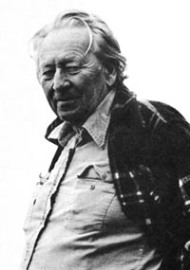 The victims of the extreme abuse that leads dissociation are often purposefully subjected to double-bind situations. However, Dissociative Disorder (DID) is controversial. It is a confusing area for forensic psychologists because of the inherent horrors which victims report:
The victims of the extreme abuse that leads dissociation are often purposefully subjected to double-bind situations. However, Dissociative Disorder (DID) is controversial. It is a confusing area for forensic psychologists because of the inherent horrors which victims report:
“Dissociative identity disorder (formerly known as multiple personality disorder), is a baffling, confusing and seemingly bizarre condition. Although DID is a formal DSM-IV diagnosis, it is very controversial and many professionals hold the view that it does not exist at all, or is factitious (pretended). I suspect that the most important reasons for the reluctance to recognise DID is not its confusing appearance, which for many professionals is actually rather fascinating. I believe the reluctance stems from the disturbing link between DID and the most extreme and sadistic forms of crime, especially when faced with the continued involvement that many survivors still have with a world that none of us wishes to believe in or share.”[69]
MPD and Torture-based Trauma
The people who suffer from split personalities share the commonality of suffering extreme forms of torture and abuse. Given that these testimonies come from people who have more than one set of memories it is often dismissed as delusion. However, the commonality of abuse leading to splitting of the personality is reported by many victims:
Survivors commonly report torture using electroshock, spinning, insolation, confinement (cages, coffins, etc.), sexual abuse, beatings (especially to the head), hanging or pulling with ropes and chains, suffocation, drowning , being held over fire, blinding or flashing light, forced ingestion of blood, faeces, flesh, etc., hunger, thirst, sleep deprivation, sensory deprivation, submersion in ice water, drugs to induce paralysis, pain, confusion, amnesia, etc., application of snakes, spiders, maggots, rats, etc., and being forced to perform abuse, torture and sacrifice of people and animals.[70]
It is interesting to note how forensic psychologists understand Multiple Personality Disorder. A recurring problem is that inherent to the condition is the fact that the victim will contradict himself and tell conflicting stories – this is what the patient needs help with in fact. The different ‘alters’, fragments of the person’s personality, will tell conflicting stories to the person investigating them, discrediting the victims testimony:
Whether one is a therapist, a police officer, a clergyman, a GP, or a lawyer, listening to accounts of people with DID is confusing owing to the multiplicity of speakers and all the contradictions that arise from that. A person may relate an event, while another alter of that same person completely denies it, has a different version of what happened, or is shocked at the fact that you ask questions about a subject that she or he had never told you about and is a secret. One is forever left questioning: Does all this really happen, do I really believe?[71]
MPD, Iatrogenic suggestion and The False Memory Foundation
The people who claim that they were the victims of mental programming do so following therapy and regressive hypnosis. They say that this is because they were originally programmed to forget the original programming. Opponents debunk this explanation by arguing that the psychotherapists treating their clients put the false memories into the minds of the so-called victims, as part of some sort of sinister agenda. In their expert opinion the abuse and programming never really happened, and the ‘victims’ are rather responding to the suggestion from the therapist working with the patient. The supposed memories of patients are iatrogenic – phenomena that occur as a result of the treatment. This is quite a strong argument, given the outrageous claims and contradictory stories that MPD sufferers relate, and a Foundation called the ‘False Memory Syndrome Foundation exists which is at the forefront of debunking the stories of MPD victims. The website of The False Memory Foundation states warns that:
“A good rule of thumb is that any condition that has become a favourite with Hollywood, Oprah, and checkout-counter newspapers and magazines stands a great chance of being wildly over diagnosed” (p. 288). “Many therapists feel that the popularity of Dissociative Identity Disorder represents a kind of social contagion. It is not so much that there are suddenly lots of people with lots of personalities as there are lots of people and lots of therapists who are very suggestible and willing to climb onto the bandwagon of this new fad diagnosis” p. 286.
The controversies surrounding the diagnosis of Multiple Personality Disorder (MPD) or Dissociative Identity Disorder (DID) as it is now called, focus on two areas: The cause of the disorder (Is it iatrogenic, i.e. caused by the therapeutic experience?) and The treatment for the disorder (Does one pay attention to the alters or ignore them, for example?).[72] Where the False Memory Institute falls down though, is that the Founding Board Members of the institute are full of paedophiles and scientists who were directly involved with MK Ultra. For example, FMSF Board Members Hypnotist Martin Orne[73] consulted extensively with MK Ultra, as did Board Member Dr Louis Joulyon West, a notorious figure in the MK-ULTRA programme who had a Top Secret CIA clearance for his work with MK Ultra, and who received millions of dollars to study as Diretor of UCLA’s Neuropsychiatric Institute. Joulyon also killed an elephant in an LSD experiment, and psychiatrically evaluated Jack Ruby after he killed Lee Harvey Oswald. Also damning is that Founding Member of The FMSF was Ralph Underwager, an expert witness in debunking children’s’ claims of abuse, but also embarrassingly a defender of paedophiles in Dutch magazines: “Paedophiles can boldly and courageously affirm what they choose … I am also a theologian and as a theologian, I believe it is God’s will that there be closeness and intimacy, unity of flesh; between people … paedophiles can make the assertion that the pursuit of intimacy and love is what they choose. With boldness, they can say, ‘I believe this is in fact part of God’s will.'”[74]  That a Foundation founded and maintained by such individuals vehemently denies the existence of Multiple Personality Disorder serves only to strengthen the argument to take the stories of victims seriously. In a 2007 Extreme Abuse Survey (EAS) in which 1471 people from at least 40 countries responded as survivors of ritual abuse, 63% of respondents answered “Yes” to the question: “My perpetrator(s) deliberately created/programmed dissociative states of mind (such as alters, personalities, ego-states) in me.” [75] What is also disturbing, and what fits in with the brief treatment of MK-ULTRA above are commonalities in victims’ accounts; the sustained use of trauma as a tool for gaining perpetual control over an individual’s will:
That a Foundation founded and maintained by such individuals vehemently denies the existence of Multiple Personality Disorder serves only to strengthen the argument to take the stories of victims seriously. In a 2007 Extreme Abuse Survey (EAS) in which 1471 people from at least 40 countries responded as survivors of ritual abuse, 63% of respondents answered “Yes” to the question: “My perpetrator(s) deliberately created/programmed dissociative states of mind (such as alters, personalities, ego-states) in me.” [75] What is also disturbing, and what fits in with the brief treatment of MK-ULTRA above are commonalities in victims’ accounts; the sustained use of trauma as a tool for gaining perpetual control over an individual’s will:
Many authors discuss trauma and abuse as the cause of dissociative disorders…they refer specifically to trauma that is deliberately and systematically inflicted by people on whom the victim is dependent with the aim of creating intense suffering and intense fear and subsequently, utter submission to the will of the perpetrators. The perpetrators may be religious groups, paedophiles, political entities or simply a family, as well as any combination of them. They all intend to achieve an invisible slavery that makes the victims unable to resist the wishes of the perpetrators, including participation in further perpetration: indeed another unnerving aspect of working with survivors is the realization that, often, they are also the perpetrators of the awful crimes that they describe.[76]
The aim of the trauma that the tortured individuals receive is the complete dominance over the subjects will. Ellen Lacter, clinical psychologist specializing in treating DID provides us with a very broad definition of ‘torture based mind control’:
I define torture-based mind control as the systematic application of (1) acute torture, including pain, terror, drugs, electroshock, sensory deprivation, oxygen deprivation, cold, heat, spinning, brain stimulation, and near death, and (2), conditioning, including coercive hypnosis, directive, illusions (staged tricks, films, stories), spiritual threats, manipulation of attachment needs, and classical operant and fear conditioning, to coerce victims to form altered mental states that arise spontaneously in response to perceived threat to physical survival, and are completely attuned to external stimuli, ready to do whatever is needed to survive, (b) self-states that spontaneously form in response to threat to psychic survival, that is levels of mental anguish that exceed the tolerance of all previously existing ego-states; (ego-states that develop more gradually through conditioning, all three of which are subjected to “programmer” strategies to define, control and “install” within them perceptions, beliefs, fear, pain, directives, information, triggers, and behaviours, to force victims to do, feel, think. And perceive things for the purpose of the programme, including execution of acts that violates the victims’ volition, principles, and instinct for self-preservation, and to cause ego-states that usually have executive control of mental functions (for the host, front, or apparently normal personality) to have no conscious memory for the torture, conditioning, programming, controlled ego-states, or executed programmed behaviours”[77]
Torture-based trauma in MK Ultra documents
The list above resonates with the sort of experiments we now know were being conducted in some of the MK-ULTRA sub programmes, especially the bit about participants having no conscious memory of the abuse or acts committed. Within context of mind control and behavioural modification, there are many signposts which show that it is possible in fact to gain control of someone’s mind through programming people as if they were organic computers; through hypnosis, pharmaceuticals and most importantly trauma, especially early on, thus creating reliable machine-like people where ‘the human factor’ had been removed, impervious to moral restraints and in denial of any acts committed. It is upsetting to think of the lengths that ghoulish researchers went to to get individuals so deeply programmed. Yet, in hindsight the memories of WWI and WWII were fresh in these researchers minds,prime human life had proven to be cheap and expendable as millions of young men were sent to their deaths. Is this material really so far fetched when we compare it to the horrific and callous waste of life of the two world wars? I imagine that researchers may have justified their actions through thinking that their research could save millions of lives through avoiding direct conflict, and for this reason was somehow worth it.
Chapter Seven
Al Qaeda and Weaponising Mind Control
“Younger children (between 8 and 12) seem to be favored.
These children are sent to a comparatively small,
extremist Deobandi or Ahl-e-Hadith madrassa in
southern or western Punjab generally several hours from their family home.[1]”
The assassinations of The Kennedy’s, Martin Luther King, and John Lennon occurred under charged political circumstances.[1] The murder of CIA financier Nicholas Deak was also particularly odd.[2] The strange behaviour of the suspected killers raised suspicions that they were hypnotised as part of some conspiracy or another. However, to avoid subjective analysis I will avoid these well-trodden paths, which are well documented elsewhere.
“The Base” Al Qaeda as a CIA sub-project
British Foreign Secretary Robin Cook exposed ‘Al Qaeda’ as the nickname given to a database of Mujahedeen allies by Western Intelligence agencies. He died of a heart attack a month following his revelations:
Bin Laden was a product of a monumental miscalculation by western security agencies. Throughout the 80s he was armed by the CIA and funded by the Saudis to wage jihad against the Russian occupation of Afghanistan. Al-Qaida, literally “the database”, was originally the computer file of the thousands of mujahideen who were recruited and trained with help from the CIA to defeat the Russians. Inexplicably, and with disastrous consequences, it never appears to have occurred to Washington that once Russia was out of the way, Bin Laden’s organisation would turn its attention to the west.[83]
Al Qaeda’s extensive links with the CIA are a matter of historical fact. Most notably radicalised indoctrinated fighters were trained in Pakistan and Afghanistan, and used as proxies against the Soviet Union in Afghanistan, under Operation Cyclone. Similar groups spread to and were used in strategically interesting places such as Bosnia, Kosovo and in Chechnya.[84] More recently, Western funded ‘Freedom Fighters’ in Libya and Syria have been exposed as Hardline Muslim Radicals in the Al Qaeda mould. There is a striking correlation between the geopolitical goals of key interests in the United States with the presence and activity of Al Qaeda style operatives.
According to Ahmed Rashid, a correspondent for the Far Eastern Economic Review, in 1986 CIA chief William Casey committed CIA support to a long-standing ISI proposal to recruit from around the world to join the Afghan jihad. At least 100,000 Islamic militants flocked to Pakistan between 1982 and 1992 (some 60,000 attended fundamentalist schools in Pakistan without necessarily taking part in the fighting).[85]
Al Qaeda as a cult, and Madrassas as programming centres
What went on in these ‘fundamentalist schools in Pakistan’? It is documented that billions of dollars were spent on hardware such as Stinger missile launchers, is it inconceivable that ‘training methods’ using insight from MK ULTRA style programmes were also offered? Mujahedeen forces were trained in American bases such as Fort Bragg and the CIA’s Camp Peary.[86] That Mujahadeen were trained in US bases demonstrates that there were moments where training consultants could pass on mind control techniques to the foreign recruits. If we seek out where the programmed individuals of MK Ultra programming are, we can see them in the Al Qaeda movement, suicide bombers absolutely convinced of the righteousness of what they are doing echoes the MK ULTRA stated goals of getting people to kill others even when they did not want to themselves. There are more eerie echoes in the Al Qaeda use of children, hypnosis and cult activities. While we may not be able to draw clear links between the foundations of Al Qaeda and the MK Ultra programme, the Al Qaeda example gives us an example of how Mind Control techniques are weaponised in contemporary conflicts. We also know Al Qaeda was more or less a CIA invention and asset wit he specific aim of hurting the Soviet Union. Al Qaeda recruits, and increasingly children are sent to training schools for religious indoctrination and tactical training. Stephen John Morgan describes Al Qaeda as a cult, rather than some sort of political terrorist organisation like Hamas or the IRA, and emphasises that this characteristic gives the organisation its power. It is religious based, members are on a sacred mission, it has an authoritarian structure, it is taught in retreat camps and madrassas where repetitive hypnotic learning is emphasised, absolute purity is required from its members, and highest honour is to be recruited for a suicide mission by someone higher up in the hierarchy.[87]
Al Qaeda’s trauma-based programming of children
The following report shows clearly that the organisation uses Mind Control techniques to programme people to become suicide bombers;
Al-Qaeda has been setting up “terrorist schools” to allegedly confine kidnapped young children and brainwash them into future attacks on western countries, the Daily Mail reported on Sunday. The “school” keeps the young children, all under the age of ten and some as young as seven, chained to beds while they are taught a very extreme version of Islam, the newspaper stated. It has been claimed that they were also taught about suicide bombings and told they would go to paradise if they committed suicide in “martyrdom operations.” When caught, the teacher claimed that the children were put in chains as punishment for missing classes. The children’s parents were unaware they were there, reported the Daily Mail.[88] Cables from the Pakistan Embassy released by Wikileaks report that Madrassas specifically target the families of impoverished children. Bryan Hunt, principle officer of the US Consulate in Lahore reported in 2008 that the Madrassas function as a sophisticated network aimed at recruiting the children of impoverished families for jihad: The network reportedly exploited worsening poverty in these areas of the province to recruit children into the divisions’ growing Deobandi and Ahl-e Hadith madrassa network from which they were indoctrinated into jihadi philosophy, deployed to regional training/indoctrination centers, and ultimately sent to terrorist training camps in the Federally Administered Tribal Areas (FATA).[89]
Hunt goes on to say that “recruitment activities by extremist religious organizations, particularly among young men between the ages of 8 and 15, had increased dramatically over the last year.”[90] The cable explains that:
The path following recruitment depends upon the age of the child involved. Younger children (between 8 and 12) seem to be favored. These children are sent to a comparatively small, extremist Deobandi or Ahl-e-Hadith madrassa in southern or western Punjab generally several hours from their family home.[91]
Haroun Fazul, the man who blew up the US Embassy in Nairobi in 1998 was recruited to a Wahabi Madrassa in East Africa at 16 and received a scholarship to study at a Madrassa in Pakistan. In a letter home sent in the mid-nineties, he wrote about the training he received:
Dear Omar, I’ve done two months in a military base (mujahedin) on heavy weapons (bazookas) for planes and with smaller arms for urban warfare Russian, Israeli arms and another two months on explosives (how to blow up buildings, houses, palaces & etc), then I studied pistols (you fire when you are in a car, learning how you kill a president in full view while he’s with his bodyguards. All that stuff I learned. Don’t worry. Then I studied topography. That is for the bazookas, if you want to fire on airplanes or boats. The things I learned in the army, the Comoran army and even the police force don’t learn. I learned how to plan terrorist acts; I learned how to use a walky-talky etc. Don’t tell anyone about all of this.[92]
Then there is the fact that the terrorist training camps of Pakistan and Afghanistan are a direct product of Western Military Intelligence:
These camps, now dubbed “terrorist universities” by Washington, were built in collaboration with the ISI and the CIA. The Afghan contra fighters, including the tens of thousands of mercenaries recruited and paid for by bin Laden, were armed by the CIA. Pakistan, the US and Britain provided military trainers.[93]
Al Qaeda a new weapon for the same old ‘Great Game’ objectives
During Operation Cyclone, the CIA was extensively involved in recruiting and training Mujahedeen fighters. These fighters have been employed across the wider region from North Africa, to the Balkans and Caucasus to further certain Western interests as part of ‘The Great Game’ which began centuries ago. Is it plausible that MK Ultra recruitment and training techniques to create ‘programmed’ fearless soldiers, were passed on to assets and partners, particularly in the most remote and insecure regions of the world, such as the Tribal areas of Pakistan, far from prying eyes. The very modus operandi of Al Qaeda seems to belie this influence. The programming of children can also be seen in conflicts in Liberia, Sierra Leone, Congo or Uganda over the last few decades. In these conflicts, kids were traumatised by their often-horrific ‘recruitment’ into the different armies. They were alternatively kept high on cocaine, cannabis or psychotropics, were subject to brainwashing and had their beliefs manipulated through spiritual and magic rituals. However, none of this quite accounts for the mystery of the specific goal of some of the MK Ultra sub projects to create ‘hidden’ and maniputable aspects of the personality, which the individual would not remember. We can only conjecture as to the effectiveness of the programme. It seems to me that the moral reprehensibleness of the programme relegated it to private cults who terrorise children and breakdown their personalities with Satanic imagery and extreme abuse to make them complicit and obedient more or less for the ‘for the kick of it’.
The changing nature of the clandestine services
The clandestine services changed a lot following September the 11th, where much larger budgets were made available. These agencies changed with the general trend of privatisation of state services. The intelligence agencies became private contractors for a government with deep pockets. Over the last decade, the intelligence services have become a tangled and complicated web of private contractors and departments:
Priest and Arkin’s conclusions is “that one of the greatest secrets of Top Secret America is its disturbing dysfunction.” In the late 1970’s the embarrassing revelations about MK Ultra, and exotic assassination attempts on foreign presidents emerged during the Church Committee’s Congressional Investigation. The powers of the CIA were limited, and assassination was prohibited. Of course, subsequent Presidents pushed for CIA powers to kill to be re-instated, and following September the 11th Twin Towers attack the CIA was given the green light to hunt down and kill Al Qaeda suspects. The CIA was preferred to the Military because it was directly answerable to the President’s Office, and had less bureaucracy than the military. Today drone attacks are the preferable way of conducting targeted assassinations, much easier than spending decades abusing someone in the hope of making them programmable. It is important not to underestimate the actual incompetence of the clandestine services, for example John Le Carre wrote the following about his real experiences as a Spy:
“For a while you wondered whether the fools were pretending to be fools as some kind of deception, or whether there was a real efficient service somewhere else. Later in my fiction, I invented one. But alas the reality was the mediocrity. Ex-colonial policemen mingling with failed academics, failed lawyers, failed missionaries and failed debutantes gave our canteen the amorphous quality of an Old School outing on the Orient express. Everyone seemed to smell of failure.”[95]
Chapter Eight
Becoming ‘well-adjusted’, pathologizing the
individual towards the maintenance of a
sick society
“The societies of Britain and the US have institutionalised economic and social inequality to the extent that, at any one time, a quarter of their respective populations are mentally ill.”[1]
“…the sickness in society lies at the society level, not at the sickness of human beings in it.”[2]
MK ULTRA Personality Tests and Psychiatric Profiling
One of the MK-ULTRA ideas which yielded successful results were Personality Assessment questionnaires, The Personality Assessment System (PAS) was devised for the CIA by Dr. John Gittinger, the agency’s Chief Psychologist between 1950 and 1974:
While on the CIA payroll, toiling to find ways to manipulate people, Gittinger created a unique system for assessing personality and predicting future behaviour. He called his method—appropriately—the Personality Assessment System (PAS). Top Agency officials have been so impressed that they have given the Gittinger system a place in most agent-connected activities. To be sure, most CIA operators would not go nearly so far as a former Gittinger aide who says, “The PAS was the key to the whole clandestine business.” Still, after most of the touted mind controllers had given up or been sent back home, it was Gittinger, the staff psychologist, who sold his PAS system to cynical, anti-gimmick case officers in the Agency’s Clandestine Services. And during the Cuban missile crisis, it was Gittinger who was summoned to the White House to give his advice on how Khrushchev would react to American pressure.[96]
Gittinger’s work was strategically valuable because it worked from the presupposition that every human had some psychological weakness that could be manipulated. Gittinger’s work was part of the MK-ULTRA programme, and consisted of lengthy personality surveys, from which a programme was used to identify personality types. This identification was useful so as to be able to identify the sort of approach which could be used depending on the individual’s’ personality type. This methodology appealed to the CIA because of the ratio between the insight which it offered and the relatively low costs of calculating the individual’s personality type.
Gittinger’s strange ideas seemed to work. With uncanny accuracy, he could look at nothing more than a subject’s Wechsler numbers, pinpoint his weaknesses, and show how to turn him into an Agency spy. Once Gittinger’s boss, Sid Gottlieb, and other high CIA officials realized how Gittinger’s PAS could be used to help case officers handle agents, they gave the psychologist both the time and money to improve his system under the auspices of the Human Ecology Society.[97]
When the PAS system was tested on the general public, it was discovered that people enjoyed taking the test; the test which included more than 500 questions gave the respondents insight into their own lives, and respondents liked to know which personality type they were classified as, and what this meant. Its popularity arose from this innate curiosity about us that makes astrologers interpretation of star signs interesting. The Personality Assessment System’s battery of questions was appropriated by psychiatrists, to create the ‘Personality Disorder Test’ and responses were used in order to define a baseline of what constituted ‘normal’ behaviour. This resonates with the Macy Conferences stress on homeostatic equilibrium, where the onus is on change to occur at the individual level, rather than at the level of society, which is the static component. The format of Gittinger’s PAS system was the model for The American Psychiatric Association’s Diagnostic and Statistical Manual of Mental Disorders (DSM). This codification system was used by ‘trained professionals’ as policy for determining mental illness, the number of disorders reported increased exponentially. Baseline normality had not been defined before, and the cursory statistical analysis of respondents’ questions to the tests gave a subjective and very narrow definition of normality. Deviance from this normality was seen as evidence of personality disorder requiring medication.
The Diagnostic and Statistical Manual of Mental Disorders (DSM) is published by the American Psychiatric Association and provides a common language and standard criteria for the classification of mental disorders. It is used in the United States of America and in varying degrees around the world, by clinicians, researchers, psychiatric drug regulation agencies, health insurance companies, pharmaceutical companies, and policy makers. Finally published in 1980, the DSM-III was 494 pages and listed 265 diagnostic categories. It rapidly came into widespread international use by multiple stakeholders and has been termed a revolution or transformation in psychiatry. However Robert Spitzer later criticized his own work on it in an interview with Adam Curtis saying it led to the medicalization of 20-30 per cent of the population who may not have had any serious mental problems. From a cursory glance I found it hard to find how Gittinger’s innocuous seeming personality tests fitted in with the nefarious companions which were the other MK-ULTRA Projects.[98]
However, the influence of personality testing to define normality, and subsequent remedying of the aberrant behaviour through the administration of pharmaceuticals is very much in keeping with an interpretation of a homeostatic cybernetic model of society and human behaviour, where the individual must be changed to make him or her a happy functioning member of society. The behavioural modification component is present through the use of personality altering drugs to change the way in which the individual behaves. Of course, for this to work at an aggregate level, a relatively narrow definition of ‘normal’ is necessary.
The World Federation for Mental Health
The World Federation for Mental Health (WFMH) was founded in 1948 (the same year as the United Nations) “to advance, among all peoples and nations, the prevention of mental and emotional disorders, the proper treatment and care of those with such disorders, and the promotion of mental health”[99] Key members of The Cybernetic Group, The Macy Foundation’s Chief Medical Officer Frank Fremont-Smith and Macy Conference Founder Margaret Mead were important founders of the institution, together with The British Army’s head of psychological operations in WWII, General John R. Rees. The organisation was set up with the support of the World Health Organisation as a representative organisation: The WFMH founding document, “Mental Health and World Citizenship”, understood “world citizenship” in terms of a “common humanity” respecting individual and cultural differences, and declared that “the ultimate goal of mental health is to help [people] live with their fellows in one world”. The document was produced at a special meeting in August 1948, and a key contributor was the psychiatrist Harry Stack Sullivan, an ardent proponent of “world mindedness”, who arrived just after participating in UNESCO’s first conference on reducing the “tensions which cause war”. Along with Chisholm, he hoped that a kind of “world loyalty” might replace primary allegiance to a nation or ethnic group.[100]
Margaret Mead and Lawrence K. Frank, two pillars of the Cybernetics Group, authored the founding statement of Rees’s World Federation of Mental Health (both Mead and Frank would later succeed Rees as president), which they titled, “Manifesto of the First International.” Mead and Frank bluntly wrote: “the goal of mental health has been enlarged from the concern for the development of healthy personalities to the larger tasks of creating a healthy society….The concept of mental health is co-extensive with world order and world community.”[101]
This ineffectiveness of the Western Model of Mental Health is belied by Mental Health survey results from developing countries. The World Health Organisation’s Regional Office for South East Asia reports that:
A consistent and repeated finding of research studies is that patients with schizophrenia in developing countries have a better outcome than in developed countries A remarkable and consistent finding has been that in developing countries, schizophrenics have a better outcome. This was based on the fact that more patients in the developing world remained symptom-free for longer periods after the initial episode. This length of remission (symptom-free period) was unrelated to drug treatment since many in the developing world did not receive continuous treatment. Psychosocial factors, such as better family support, community tolerance, extended networks and more favourable job opportunities, have been postulated as the reasons for this observation. From several studies, it is known that short duration of initial episode, few episodes in the past, good adjustment patterns, being married, early diagnosis and initiation of treatment, acute onset, good social support networks and total compliance to medication are some factors favouring good prognosis in schizophrenia.[102]
The medicalization of society
In the 1950’s, Psychiatry was seen as something which could guide society; it gained prominence in modern occidental societies because of its promise to control the dangerous forces within human beings. Film-maker Adam Curtis points out that: “The psychoanalysts had come to power in America because of their theory that they knew how to control the dangerous forces inside human beings.”[103] In turn psychiatry became prominent in the post ‘homeostatic-cybernetic’ world because of its promise of normalisation of individuals, changing them to fit the mould of society, rather than changing society to fit human beings. The Social theorist Marcuse criticised this point of view:
Marcuse challenged that social world and he said that’s a world that should not be adapted to. And in fact what the individual was adapting to was corrupt and evil and corrupting. In other words he switched the source of evil from inward conflict to the society itself. That the sickness in society lay at the society level not at the sickness of human beings in it. And if people did not challenge that then they were in fact submitting to evil.[104]
Marcuse’s thinking is in line with Wilhelm Reich’s, whose fall out with his mentor, Sigmund Freud Adam Curtis outlines:
Reich was an especially devoted student of Freud in the 1920’s, but he challenged Freud on the fundamental basis of psychoanalysis. Freud argued that at heart human beings were driven by primitive animal instincts and the job of society was to repress or control these dangerous forces. Reich believed the complete opposite; the unconscious forces within the human mind he said were good it was their suppression by society that distorted them. That was what made people dangerous.[105]
Martin Luther King suffered from severe depression, he saw his depression as a reflex of the ills of society, he was “mal-adjusted” and this became a recurrent theme, symbolic for his rejection of society and call for change in many of his speeches:
There are some things in our social system that I’m proud to be maladjusted to, and I call upon you to be maladjusted to. I never intend to adjust myself to the viciousness of lynch mobs; I never intend to become adjusted to the evils of segregation and discrimination; I never intend to become adjusted to the tragic inequalities of the economic system which will take necessity from the masses to give luxury to the classes; I never intend to become adjusted to the insanity’s of militarism, the self-defeating method of physical violence.”[106]
For King, society was a maddening force, and conformity with it required a necessary suppression of one’s personal sense of justice. King preferred to be mal-adjusted, rather than “well-adjusted”. In King’s vision the maladjusted members of society are especially important as they are the ones whose revolt at the status quo can cause change.
I call upon you to be maladjusted. Well you see, it may be that the salvation of the world lies in the hands of the maladjusted. The challenge to you this morning as I leave you is to be maladjusted…”[107]
It may well be that our world is in dire need for a new organization, the International Association for the Advancement of Creative Maladjustment, men and women who will be as maladjusted as the prophet Amos, who in the midst of the injustices of his day, could cry out in words that echo across the centuries. [108] Cybernetically speaking, King is saying that we do not need to change to fit the broken system which drives us crazy, rather it is natural for us to be particularly uncomfortable with the system, and this discomfort should lead us the changing the system as a whole for something more coherent with ourselves. In today’s context his words add wood to the fire of suspicion that the medicalization of society is a project designed to breed consent and docility.
Michel Foucault has also famously historicised the rise of a clinical approach to mental health as something which arose in the context of the growing dominance of rationalist though in Europe and the scientific classification of individuals as ‘mad’ was a fig leaf for cleansing society of the socially undesirable. The imprisoning of the mad occurred before any scientific attempts to remedy the situation[109].
Chapter Nine
Chemically curing deviations from baseline
normality
“Anti-psychotic use among children is as high as 1 out of
69 children in the United States [who] are taking drugs for insanity psychosis, which is what these drugs produce.”[1]
With the establishment of the World Mental Health Foundation, (in which the Macy Foundation Cybernetics Group played a not insignificant hand), the mental health discourse was promoted globally with the political objective of staking epistemological claims to normality as a way of being coherent with capitalism. A mental health model focused on individuals, that sought to build an international status quo regarding psychiatric norms, and an international consensus on what constitutes normal behaviour. In this way the focus of attention was concentrated on the neurosis of individuals, rather than on how the make-up of society per-disposes people to psychosis. The pharmaceutical-assisted medical approach to mental health became the international norm. A way was found a way where human behaviour could be regulated regulate human behaviour, a way to keep the thermostat at the same place no matter the temperature, by changing the individual. The cybernetic theory of homeostasis and Freudian psychology do not question the rationality of society (the status quo of society is the constant), while the behaviour or minds of individuals can be modified. Therefore, individuals who are maddened by life in the current unequal irrational destructive dehumanised consumer capitalist society are suffering from a personal, internal problem, rather than society being perverse in itself. There is a body of research that shows that mental illness correlates strongly with social inequality:
The societies of Britain and the US have institutionalised economic and social inequality to the extent that, at any one time, a quarter of their respective populations are mentally ill.[110] To tackle the root causes of stress, depression and anxiety – as well as addiction, educational performance, violence and teenage pregnancy – we need to tackle the wider problem of inequality. At its simplest, bigger income differences reduce social cohesion and make all the problems of class and social hierarchy worse – not just for the poor, but for all of us.[111] The emotional and cognitive effects of high levels of social status differentiation are profound and far reaching: greater inequality heightens status competition and status insecurity across all income groups and among both adults and children. It is the distribution of economic and social resources that explains health and other outcomes in the vast majority of studies. The importance of the social and psychological dimensions of material deprivation is gaining greater recognition in the International literature on poverty and informs current efforts to develop indicators that capture the missing dimensions of poverty.[112]
In this context, how do we square that 9% of children of the United States are suffering from ADHD?[113] That these kids need to be medicated with a drug called Aderall that is made by the same Swiss company Sandoz which so many years before offered the CIA an exclusive contract for their entire production for the drug that they discovered – LSD. This is an example of the way in which the cybernetic system currently in place modifies the behaviour of the individual rather than develop systemic changes to society as a whole. There is currently a definition of normality, that it is normal to work 9 – 5, be a good consumer, be vaguely frightened of a host of possible evils (war, environmental destruction, financial collapse, bird flu), and to function normally while being bombarded by an unprecedented amount of information daily (from TV, internet, radio, computer games, newspapers, smart phones, laptops, etc.). As stated at the beginning of this piece, the goal of the 21st century mind studies has been the creation of an easy to govern society, complicit with the status quo, no matter how harsh. There are drugs for depression, drugs for anxiety, drugs for lack of attention, drugs for despondency and drugs for hyperactive children. There is a narrow band of normality, and any deviation requires medication. In this way the individual is modified and the system maintains homeostasis. A group of aggregate individuals, considered as particles in space with probabilities of behaving in one way or the other depending on stimulus is easier to govern than a society with a coherent body politic, or with an active public sphere. Our consumer driven individualism on the one hand, and our frame of mental health disempower the individual and facilitate manipulative governance. It is not that we cannot organise collectively, rather it is that working together for the common good, or practical organisation among citizens is as Foucault might say completely outside our discourse, completely outside our language for understanding the world. From an international perspective, the fallacy western medical health best practice is belied by data from developing countries.
A remarkable and consistent finding has been that in developing countries, schizophrenics have a better outcome. This was based on the fact that more patients in the developing world remained symptom-free for longer periods after the initial episode. This length of remission (symptom-free period) was unrelated to drug treatment since many in the developing world did not receive continuous treatment. Psychosocial factors, such as better family support, community tolerance, extended networks and more favourable job opportunities, have been postulated as the reasons for this observation. From several studies, it is known that short duration of initial episode, few episodes in the past, good adjustment patterns, being married, early diagnosis and initiation of treatment, acute onset, good social support networks and total compliance to medication are some factors favouring good prognosis in schizophrenia.[114]
In addition, we can forecast a rise in mental health problems as our citizens become more and more alienated from nature, and worried about the future:
Already we find psychiatrists and psychologists issuing guidelines on how to respond to emotional and psychological distress associated with awareness of climate change, although the leading therapeutic recommendation to “be optimistic about the future” suggests that the mental health professionals have yet to grasp the seriousness of the threat posed by global warming. We can expect that, for a time, the loss of faith in the future and in our inability to control our lives will result in a proliferation of mental disturbance characterised by depression, withdrawal and fearfulness.[115]
Mind altering mental health
There are numerous scientific studies that show how shockingly widespread the prescription of mind altering pharmaceuticals is, as well as the inefficiency of the current model of proscribing dubious drugs for invented problems:
- America’s children are already subjected to massive psychiatric interventions, with more than a million children, mostly boys, taking methylphenidate (trade name, Ritalin), and tens of thousands being hospitalized (Breggin, 1992).
- In a meta-analysis of 46 studies, Andrews et al. (2011) found the relapse rate for antidepressant-treated patients (44.6 per cent) was much higher than for placebo-treated patients (24.7 per cent). [116]
- Nearly 8% of the active-duty Army is now on sedatives and more than 6% is on antidepressants — an eightfold increase since 2005.[117]
The medicalization of children is not limited to the United States either, for example, in Brazil the amount of Ritalin being prescribed by health professionals is increasing. There is a vicious circle that in poor families where there is not adequate spaces for children to play, so children are cooped up in small single room houses all-day (because it is too dangerous outside), the rates at which children are diagnosed with Attention Deficit Disorder increases, and children are increasingly medicalised. In the UK, a million children are estimated to be mentally ill and 23% of adults have a neurotic or psychotic disorder or are addicted to alcohol or drugs.[118] It is important to note that it is not only children who are increasingly medicalised the aged are also increasingly given psychtropics to affect behaviour:
The use of antipsychotic drugs to tamp down the agitation, combative behaviour and outbursts of dementia patients has soared, especially in the elderly. Sales of newer antipsychotics like Risperdal, Seroquel and Zyprexa totalled $13.1 billion in 2007, up from $4 billion in 2000, according to IMS Health, a health care information company.[119] Nursing home residents received 20 per cent of the 8.5 million claims for antipsychotic medicines for all Medicare beneficiaries at a cost of $309 million during those six months. Youths too are subject to increasing mind altering pharmaceuticals; ‘Behavioural Modification Therapy’, is defined as “the use of rewards or punishments to reduce or eliminate problematic behaviour, and can teach new responses to an individual in response to environmental stimuli. It is also defined as a, “therapy that seeks to extinguish or inhibit abnormal or maladaptive behaviour.”[120]
Antipsychotics because they are not addictive are not as controlled as drugs such as Valium or Xanax, consequently, “they can be prescribed for unapproved uses like behaviour control and sleep-inducement in children and the elderly, without government scrutiny or fear of prosecution for “overprescribing.”[121]
Psychosis and drugs
A correlation between the killers at the Columbine High School Massacre, the Sandy Hook massacre and many others are the fact that the perpetrators somehow suddenly flip, and decide to go on killing sprees is that these people were all taking antipsychotic or anti-depressant medicines.[122] The following interview extract explains:
Christopher Bollyn (CB): . . . This is Dr. Ann Blake Tracy . . . an expert on these kinds of [serotonin-enhancing] drugs that Dylan Klebold and Eric Harris were taking. Can you tell . . . about . . . these drugs that these boys were taking: why a student would be taking them and what it does to their way of thinking? Dr. Ann Blake Tracy: Well, why somebody would be taking them is a whole show in and of itself . . . . It’s very simple to do. It looks as though Eric and Dylan were given them about the time they broke into the van and they were diagnosed with . . . some kind of “Defiant Disorder.” Anyway, what the drugs do is they work very, very similarly to LSD or PCP. Of course, most people have no idea that they were introduced to the market by the same company who originally gave us LSD. And when they patented it . . . CB: Is that Solvay? Dr. Tracy: That was Eli Lilly [pharmaceutical company]. CB: Eli Lilly. Okay. Dr. Tracy: And Lilly came out . . . in February 1956 with their patent on LSD. And just before that, in LIFE magazine, there was a huge article, like two months before, talking about this great new medication that was going to cure mental illness, and cure alcoholism, and aid in psychoanalysis. We now know that drug to be LSD. CB: What about these drugs . . . like these boys were taking, how is it like that? Dr. Tracy: . . . When LSD goes into the brain, the brain reads it as if it’s a rush of serotonin, which is a neurotransmitter in the brain. That’s the same neurotransmitter that these drugs affect. How these drugs work, as one doctor who I do shows with regularly likes to put it: he calls them a slow fuse LSD. Because they impair your ability to metabolize serotonin so that it starts to build up in the brain. So gradually over time, what you are getting is the same effect as if you took a hit of LSD. CB: . . . I read that when people take these kinds of drugs, that they often act out their nightmares. Dr. Tracy: Exactly. CB: . . . [H]ow does that work? Dr. Tracy: It’s called a REM Sleep Behavior Disorder. . . . It was known as something they would expect to see in drug withdrawal. Now we know that 86% of the cases being diagnosed are patients taking an anti-depressant. So what REM sleep behavior disorder is, is exactly what you just described. It’s acting out nightmares. You have no muscle paralysis during that state and therefore you can just start acting out whatever is going through your brain. CB: . . . [A]re many people taking these drugs today? Dr. Tracy: Huge amounts of people are taking these drugs. In fact, so many are taking them that now we’ve just heard that the anti-psychotic use among children is as high as 1 out of 69 children in the United States [who] are taking drugs for insanity psychosis, which is what these drugs produce.[123]
Medicalisation of society, profit and corruption
The medicalization of society produces vast profits for pharmaceutical companies: The benefit for drug companies is cold profit. Antipsychotics bring in some $14 billion a year. So-called “atypical” or “second-generation” antipsychotics like Geodon, Zyprexa, Seroquel, Ability and Risperdal rake in more money than any other class of medication on the market and, dollar for dollar, they are the biggest selling drugs in America. Although these medications are primarily approved to treat schizophrenia and bipolar disorder, which combined affect 3% of the population, in 2010 there were 56 million prescriptions filled for atypical antipsychotics.[124] Drugs companies’ capitalisation gives them a corrupting influence over academia which create new diseases, or over-estimate their threat, to make more business opportunities for Pharmaceutical Companies. For example, Dr. Joe Biederman one of the most influential researchers in child psychiatry is a case in point: “Although his studies were small and often financed by drug makers, his work helped fuel a 40-fold increase from 1994 to 2003 in the diagnosis of paediatric bipolar disorder.”[125] The primary promoters–inventors, one might say– of diagnosing children with “bipolar” disorder, who for over a decade, aggressively promoted the bipolar diagnosis and use of antipsychotics in children, were disciplined by Harvard University and its affiliated Massachusetts General Hospital. An investigation, prompted by Sen. Charles Grassely, was conducted by Harvard University-affiliated Massachusetts General Hospital. It concluded (earlier this month) that psychiatrist Joseph Biederman and two of his protégés, Thomas Spencer and Timothy Wilens -each of who failed to disclose millions of dollars they had each received from the makers of antipsychotics, the drugs they promoted for the treatment of bipolar in children–had indeed violated the University’s/ and hospital’s conflict of interest reporting standards.[126]
Biederman was caught in promising results to pharmaceutical companies: “The psychiatrist, Dr. Joseph Biederman, outlined plans to test Johnson & Johnson’s drugs in presentations to company executives. One slide referred to a proposed trial in preschool children of risperidone, an antipsychotic drug made by the drug company. The trial, the slide stated, “will support the safety and effectiveness of risperidone in this age group.” Dr. Biederman was the lead author of a trial published last year concluding that treatment with risperidone improved symptoms of attention deficit and hyperactivity disorder in bipolar children.”[127]
Medicalisation of mental states and control
The sheer numbers of people taking, or being forced to take these pills demonstrate a concerted effort to control behaviour and thoughts of society at a whole through mind altering chemicals. If the drugs companies could get us all taking the pills, they would, as this makes logical sense in a capitalist economy. This “pharmaceuticalisation” is part of a broader programme of conditioning members of society to be more docile and accepting of the hegemonic status quo. To accept their role as automatons within the factory production line system of the industrial-technological age. The de-classified clandestine information on MK Ultra and its origins demonstrates just how much often highly immoral effort went into figuring out how the human brain and human behaviour worked and could be manipulated. A cybernetic analysis of the medicalization of mental health agenda shows that the changing people’s minds and behaviours with drugs to fit into a predetermined mould of normality is part of a political agenda to facilitate governance and maintain the current status quo of acceptance of the capitalist-industrial system. Another important mechanism is the Television, a pacifier and moulder of opinion.
Chapter Ten
Televisions influence on the human brain
“The most special quality of passive learning is, by
definition, an absence of aroused resistance to what is learned.”[1]
Architecturally speaking in many houses across the world the television set replaces the hearth as the central position in the house. Television sets dominate the rooms in which they sit. Before Sofas and chairs would be placed in circular formations to encourage people to speak to each other. Now the predominant set up our living rooms like cinemas, with the sofa in front of the TV. At family gatherings such as Christmas the TV dominates. We engage in mutual TV watching rather than conversation with each other.
People spend a large amount of time in front of the television set, for example, Americans spend 34 hours a week watching TV according to a recent Nielsen report. Children 2-11 watch an average of 24 hours of TV a week, or 31/2 hours a day. People over 65 average 48 hours a week, or nearly seven hours a day.[128] The TV has an impressive global reach, in 2009 a study showed that approximately 78% of the world’s household’s had a Television.[129] These figures are quite startling; we spend so much time staring at the TV because it is pleasurable, addictive even. It is not so much the content that is important, but the technological medium. In 1969 a researched from General Electric, Herbert Krugman conducted experiments into what happens with people’s brains when they watch television. Krugman found out that TV watching causes the individual’s brain waves to shift from a Beta waves state to an Alpha wave state. Brain attention also switches from the left to the right side of the brain, and endorphins are released. This response puts the individual into a sated and receptive state, akin to hypnosis. TV watching Krugman argues is a form of Right Brain learning, ‘memory without recall’, or passive learning.[130]
The response to print generally may come to be understood as active, and composed primarily of fast brain waves while the response to television might come to be understood as passive and composed of slow brain waves. [131] The basic electrical response of the brain is clearly to the medium and not to content difference…. [Television is] a communication medium that effortlessly transmits huge quantities of information not thought about at the time of exposure.[132] The most special quality of passive learning is, by definition, an absence of aroused resistance to what is learned: resistance is exciting and a corollary, therefore, of active learning. This means that passively learned material has an important “advantage” which some have associated with so called subliminal perception, extra-sensory perception, or hypnosis.[133]
Paul Gatercoal explains how the neurological response that happens in the brain when watching an advert on TV:
The best way competing media messages can grab attention is by stimulating the area of the brain called the reticular formation. The reticular activating system is the sensory sorting area of the brain; it responds best to sensory input that is original, novel, or exciting. However, before alerting the rest of the brain to give undivided attention to the stimulus, the reticular formation asks for a second, subjective opinion from another area of the brain called the amygdala. The amygdala deals with emotional impact and gives a second opinion in the form of an emotional overtone that either depresses or excites a novelty factor in the reticular formation. If the sensory stimulus is deemed .emotion laden, new, and exciting, the reticular activating system then alerts the cortex (the thinking top layer of the brain) tha this is worth paying attention to, and undivided attention is given to that media message (Ornstein 1984). This is the reason the majority of messages from the media are extraordinary in nature; shown in their best light; simplified into catch cries, phrases, and jingles; short and sweet, horrific, gross, hyped, filled with special effects, colorful and contrasting, authoritative; and most of all, emotion filled. Media makers know that red will grab attention; loud, high-pitched sounds are more noticeable; big triumphs over small. They know that stimulating an emotional association in the mind of the individual will grab attention and help to retain the message in long-term memory. These are the rules and conventions of modem day mass communications. Politicians, advertisers, interest groups, movie moguls, journalists, authors, artists, and anyone who wants an audience must play by these rules or lose out. Our society is filled with powerful, emotion-laden vicarious messages that grab attention and continually stimulate endorphin release in the brain.[134]
TV and Advertising
When we combine the hypnotic medium of television with the amount of advertising on television, we can see this force as a powerful conditioning agent that serves to encourage us to work hard and consume. Advertising and Public Relations have been taken very seriously over the last century. Insights from psychoanalysis, behavioural psychology and neuroscience have all been employed to manipulate the human mind to encourage individuals to buy certain things, or support one political party or other. As well as showing us products, adverts also present us with values, ideals and social standards. They draw upon major personal themes such as beauty, happiness, love, companionship, sex, and self-image, in a positive but unrealistic light to promote their product. As a consequence, these adverts are potentially shaping us towards mental states, which are in fact, quite inhibiting, insecure, and unhealthy.[135] We are bombarded by advertising whose blade is honed to subliminally attack our primal drives and fears, the most talented and creative individuals are no longer artists, but spend their creative juices in making people feel that they intrinsically need the products which their clients are selling. We are bombarded by advertising, building up a holographic bubble of perfect hair, abdominals, beautiful people, toys, cars, phones, clothes, furniture, houses, boats, planes…which if we do not have we feel unhappy, a whole inside of us. This is our programming; this is how we are conditioned to feel. The television and cinema conspire to thicken this holographic illusion which distracts us from our humanity. Our leisure hours are spent in front of the box, while our brain relaxes and we enter into a semi-hypnotic our norms and values are programmed in:
“Advertising campaigns have become the central art of our generation. The artistic imagination, previously occupied with translating heaven and listening quietly for the intangible within and around us, has traded these idylls for steady employment producing car commercials. It all seems to be of a part: the images crowding in on us as cheap and lifeless as the products they represent, built in factories owned by hollow men trying to fill their emptiness with mansions and treasures that they drained from us. In doing so they make the world as dark and dead as they are.”[136]
Constant messages that show us bodies and lifestyles that we do not have but are encouraged to feel that we should have. That we should feel eternally dis-satisfied until we buy a certain product or other associated with the above sexualised image or lifestyle goal. Our false sense of satisfaction every time we buy something needs to be constantly replenished. This fuels the consumer-driven economy and keeps us working hard for our mirrors and beads. It is little wonder with so much assault on our psyches we come down with mental illnesses from time to time.
TV Content
The content of Television is also stimulating, as Adorno would tell us, there will always be some sort of niche cultural product which we like, which will be sold to us, and in that way, even though we do not consider ourselves mainstream, we contribute to the overall system nevertheless. For Kaczynski: “Entertainment provides modern man with an essential means of escape. While absorbed in television, videos, etc., he can forget stress, anxiety, frustration, dissatisfaction.”[137] TV functions like an escape-valve, which keeps us happy and unquestioning:
Our use of mass entertainment is “optional”: No law requires us to watch television, listen to the radio, read magazines. Yet mass entertainment is a means of escape and stress reduction on which most of us have become dependent. Everyone complains about the trashiness of television, but almost everyone watches it. A few have kicked the TV habit, but it would be a rare person who could get along today without using ANY form of mass entertainment.[138]
Without the entertainment industry, the system probably would not have been able to get away with putting as much stress producing pressure on us as it does.[139]
Control of Television and the illusion of choice
The TV and print media appear to give us a vast array of choice of what to watch or read, however the following six corporations control 90% of the media: General Electric, Newscorp, Disney, Viacom, Time Warner and CBS. The media is firmly controlled by elite consortiums of business interests that subtly promote their multi-platform strategic goals. Jaques Ellul writes that this media control makes propaganda more effective: “Only through the concentration in a few hands of a large number of media can one attain a true orchestration, a continuity, and an application of scientific methods of influencing individuals.”[140] Joyce Nelson explains the controlling influence of TV on our society:
“As real-life experience is increasingly replaced by the mediated ‘experience’ of television-viewing, it becomes easy for politicians and market-researchers of all sorts to rely on a base of mediated mass experience that can be evoked by appropriate triggers. The TV ‘world’ becomes a self-fulfilling prophecy: the mass mind takes shape, its participants acting according to media-derived impulses and believing them to be their own personal volition arising out of their own desires and needs. In such a situation, whoever controls the screen controls the future, the past, and the present.”[141]
The discipline of Public Relations, or Propaganda as it was referred to previously became very important in the last century. Technological advancements made ‘mass media’ possible, and politicians and product sellers learned to use these technologies to their advantage. The Public Relations apparatus is specifically designed to mould public opinion, and ingenious ways are devised to subtly influence people’s minds. The medium of television allowed these messages to be driven into people in particularly relaxes and uncritical states.
Chapter Eleven
Conclusion: Disempowerment,
manufacturing normality and aggregating
individuals
In the technotronic society the trend would seem to be
towards the aggregation of the individual support of millions of uncoordinated citizens. [1]
A study into perceptions of Americans demonstrates how disconnected from each other we have become. The Harwood Foundation conducted focus groups among Americans in 1995, and inn focus groups participants complained about the wanton consumerism of Americans: 95% of survey respondents characterized “most” of their fellow Americans as materialistic, with a majority saying that most Americans are “very materialistic.”[142]
People are deeply concerned about this pervasive materialism: in the focus group discussions, they made clear their view that we have gone overboard as a society in emphasizing material gain over all other things. As a Frederick man described it, “We spend so much time rat-racing around, working our fool heads off, trying to get all those material things.” A Los Angeles man saw it as “the lust for wealth and power that…we’re taught to worship.”[143]
Yet people were surprised that the other members of the focus groups felt the same way:
The degree of consensus uncovered by the survey and focus groups about the nature of the problem we face is an essential ingredient for creating broadly-supported, meaningful, and sustainable change. People from all walks of life share similar concerns about our culture of materialism and excess, and the consequences for future generations. Fundamentally, they agree that “we overdo it and buy too much,” as a Dallas woman said. Many are surprised and excited to find that others share their views.[144]
What this shows is that individuals perceived ‘everyone else’ as materialistic and locked to a value-less system of work and consumerism. However, the study showed that 95% of respondents felt the same way. This lack of communication and dialogue one’s neighbours builds up a false impression about the world. In this way people are discouraged to politically organise because they are encouraged to feel powerless and that there are not enough like-minded people. As mentioned regarding the medicalisation of society, a baseline is created, and those who deviate from that normal are changed to fit in. For Jacques Ellul, a central goal of propaganda is to promote this vision of what the given society deems “normal”. This is something created by propaganda:
The emergence of such a “normal” type used to be automatic and spontaneous; it now becomes more and more a systematic creation, conscious, planned and intended. The technical aspects of men’s work, a clear concept of social relations and national goals, the establishment of a mode of common life – all this leads to the creation of a type of normal man, and conveniently leads all men towards the norm via a multitude of paths. This is why adjustment has become one of the key words of all psychological influence. Whether it is a question of adaption to working conditions, to consumption, or to milleu, a clear and conscious intent to integrate people into the “normal” pattern prevails everywhere.[145]
The influential US foreign policy advisor Zbigniew Brzezinski outlined in 1969 the benefits for governance of populations which are made up of isolated and uncoordinated individual:
In the technotronic society the trend would seem to be towards the aggregation of the individual support of millions of uncoordinated citizens, easily within the reach of magnetic and attractive personalities exploiting the latest communications techniques to manipulate emotions and control reason. The technotronic era involves the gradual appearance of a more controlled society. Such a society would be dominated by an elite, unrestrained by traditional values. Soon it will be possible to assert almost continuous surveillance over every citizen and maintain up-to-date complete files containing even the most personal information about the citizen. These files will be subject to instantaneous retrieval by the authorities.[146]
Brzezinski became very influential among elite groups, acting as Foreign Policy Advisor for various Presidents of the United States and playing a pivotal role in the creation of the secretive Trilateral Commission.
The research in this paper started with a discussion of the awakening interest in essentially understanding ‘what makes people tick’, either from a behaviourist, psychoanalytical or cybernetic perspective. At the same time Propaganda and Public Relations became more and more important as mass communication technology rapidly evolved. Another strand is an exposition of the extreme lengths that secret research went to in ‘programming’ people. Thirdly, a clinical baseline of what constitutes ‘normal’ was made, and behaviour-altering drugs developed for those who deviate from this constructed normality. The TV is particularly powerful as a pacifier and enforcer of perceptions of what constitutes this normality. We need to see these developments together with the rise of the modern factory as a place of work. Where humans are reduced to mere parts in a machine, spending their lives banging the same few buttons repeatedly in a completely un-rewarding environment. The division of labour in current industrial-technological society requires complicit populations, who cannot even imagine that some other, more enriching way of life is possible. As Huxley mentioned “in the future people will learn to love their servitude.” The strands of media, public relations, mental health and clandestine research into programming people’s minds discussed in this essay point out that all of these forms of population control benefit the elites, i.e. those who are most capitalised by the current status quo. Such forms of control are essential to maintaining and deepening the deeply unequal and elitised global society in ascendance. The rich have never been richer, wealth has never been concentrated in so few hands, or the vast mass of humanity pushed towards mediocrit
Reflections: Implications and Considerations
The following implications arise from the above review: The first point is the importance of recognising that we as populations have been and are constantly being conditioned and controlled, with the aim of encouraging conformity and compliance with the current status quo. A necessary first step to creating a different sort of world is recognition of this state of affairs. The control outlined above is very much in the interest of the global elite, who are now in a more powerful and exclusive position than ever before in the history of humanity. The implication of this is of the importance of addressing our social illness on an individual and societal level. To learn to recognise and reject certain visions of normality that we are encouraged to accept as the only way that things could ever be. Another implication is the importance of opening our imaginations, to think outside of the myths that we believe about ourselves, to embrace the good ideas which would benefit humanity, but which we are encouraged to believe are doomed to failure because they are somehow not ‘normal’ enough. I would like to include the consideration that this essay is not an attack on the clandestine services of the CIA, or on The United States, it is just that there is more material available (in English too) in the public domain on this area than on Soviet or Chinese experiences. With more time, I would have liked to have a more global perspective. What I hope emerges is a story of elite co-option of government and clandestine services, medicine public relations and technology in order to make society as a whole easier to govern.
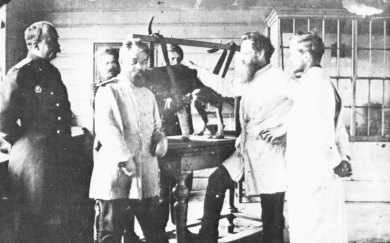


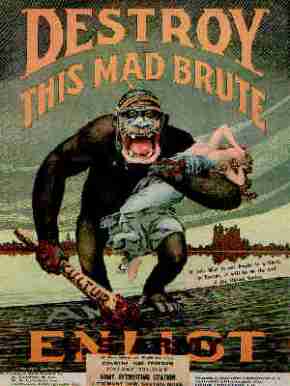



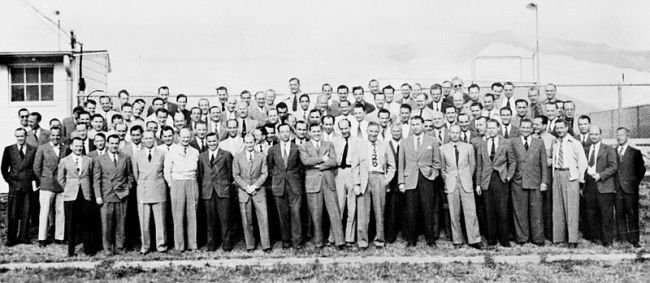







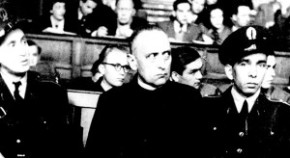

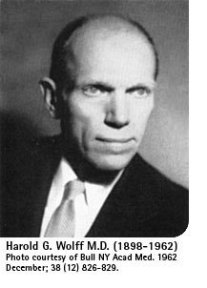


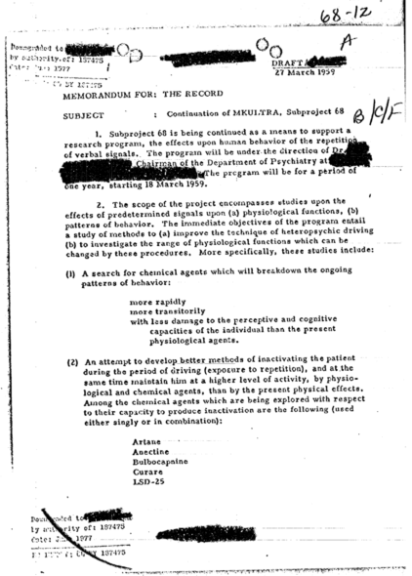
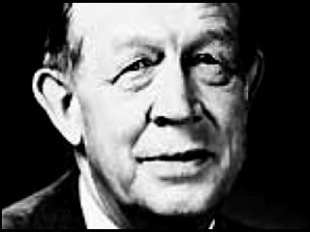
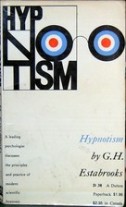




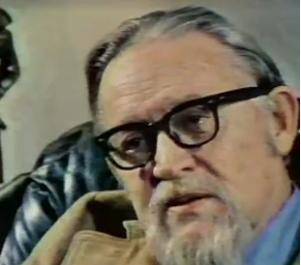




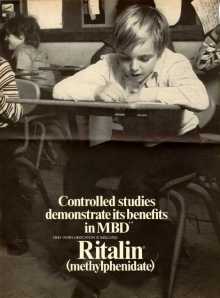

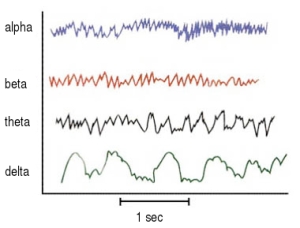

[…] The 20th century research into Behavioural Control, and its implications for our minds […]
❤